Posts in Category: Uncategorized
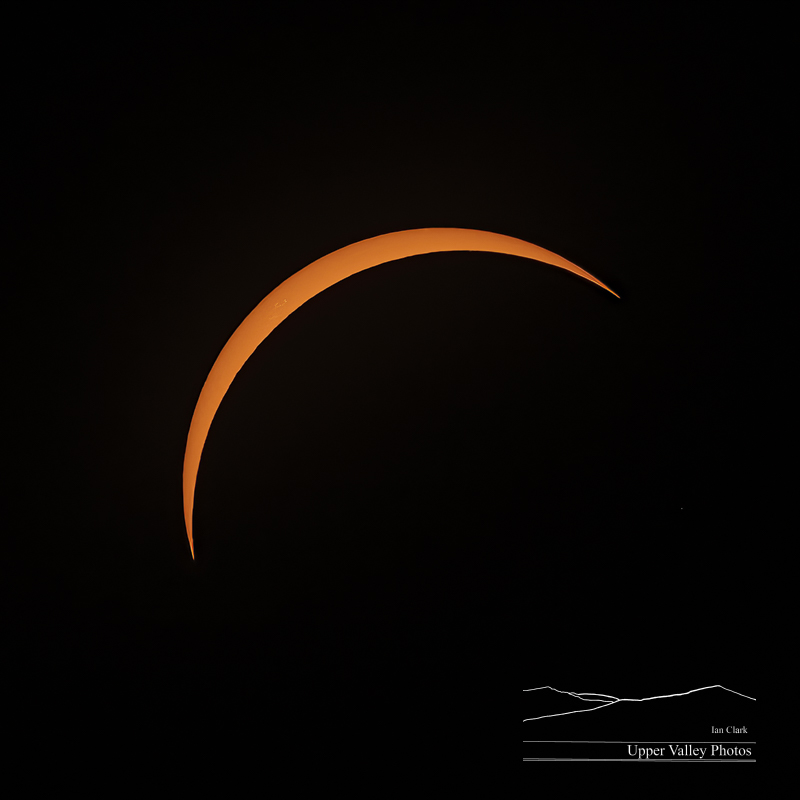
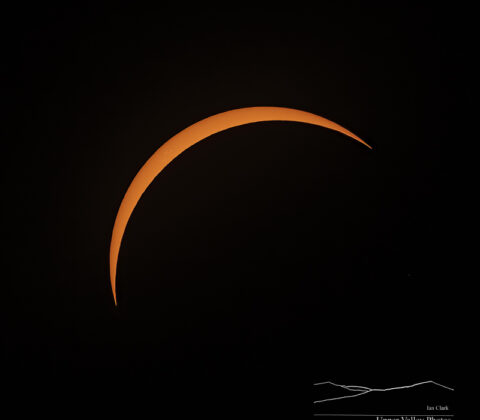
Total Eclipse 2024
Some of you may have heard we had a total eclipse yesterday. I ventured up Owl’s Head in the Groton State Forest in Groton, Vermont to have a look. I was joined by 75 of my closest friends. The crowd was very friendly and I met lots of great people.
I was using my 400mm with a 1.4x extender with Thousand Oaks film solar filter. I used the timer on my phone to time the images, aiming for five minutes between shots. There is a fair bit of variation. I seriously misunderestimated how long it would take me to get the solar filter off and require the sun and failed to capture totality. I’ll be kicking myself for years…..
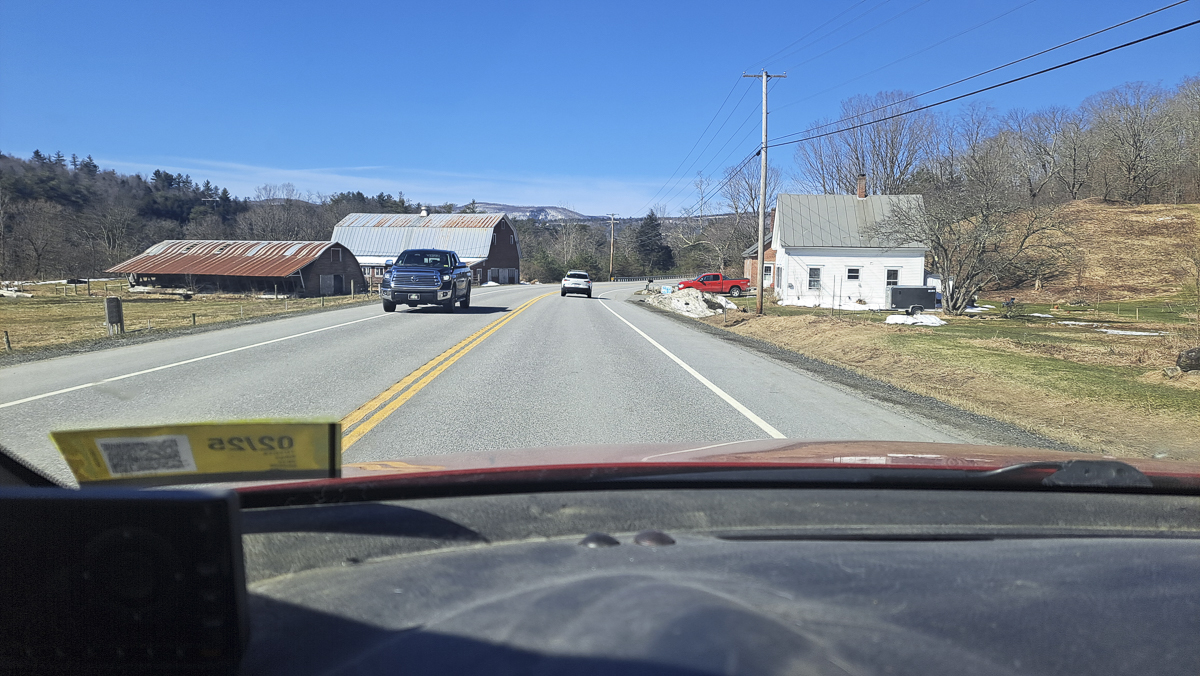
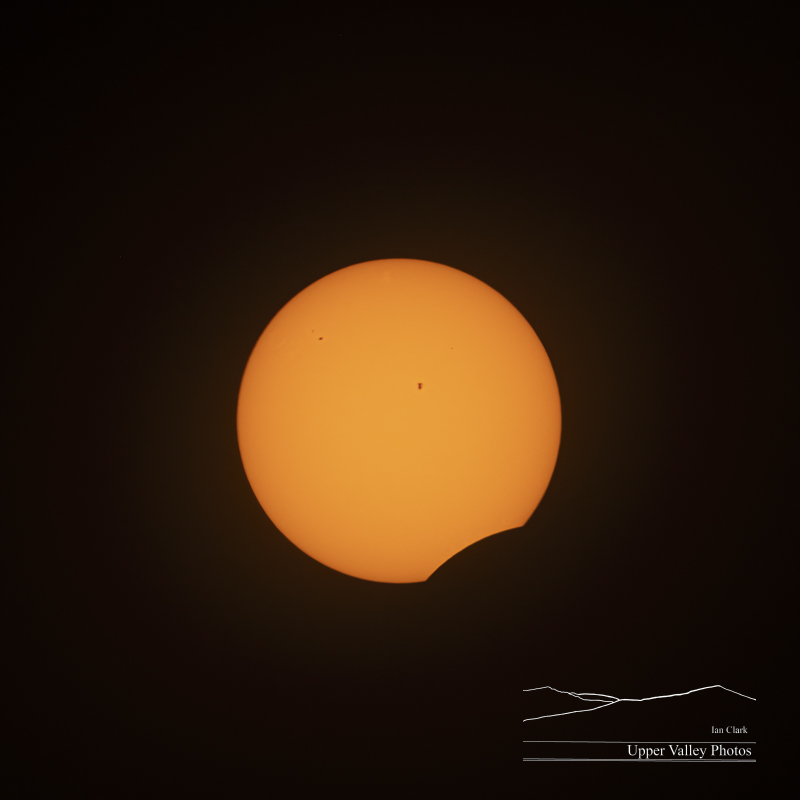
Sunspots are caused by intense magnetic flux (flowing liquid) pushing up from the Sun’s interior. This movement of flux creates magnetic fields roughly 2,500 times stronger than the Earth’s and interferes with the nominal convection on the Sun’s surface. This causes cooler areas – only about 7,000° F (normal is roughly 10,000°F). This causes the dark spots we can see on the Sun’s surface. Typical sunspots are roughly the size of the Earth.
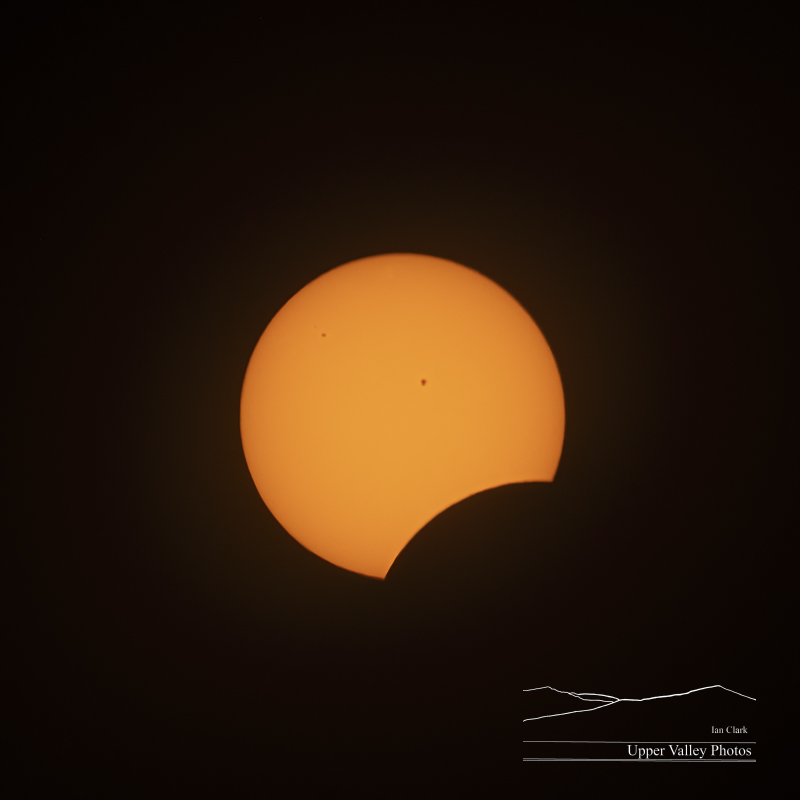
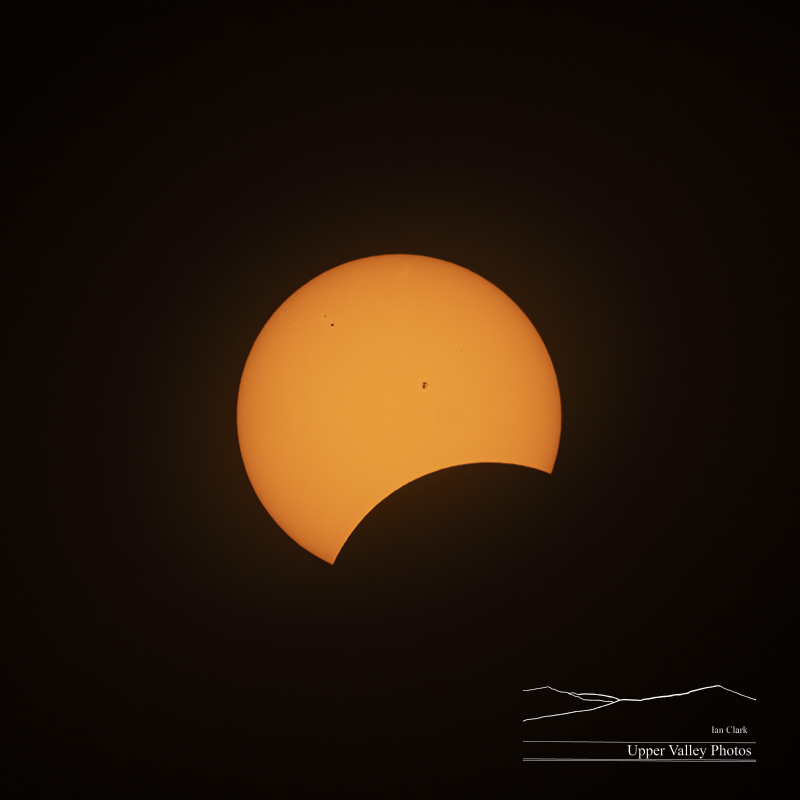
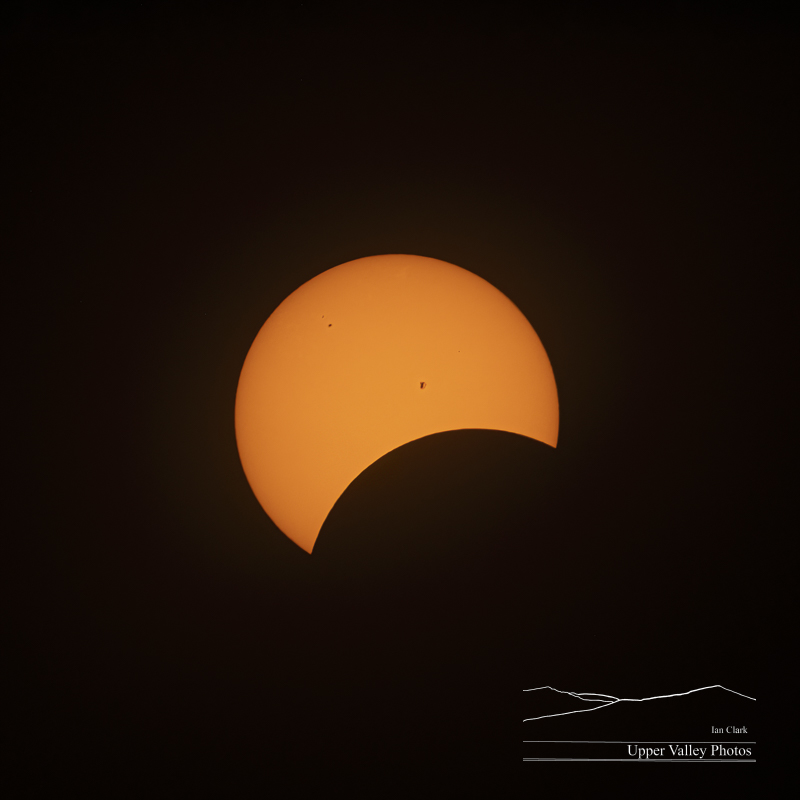
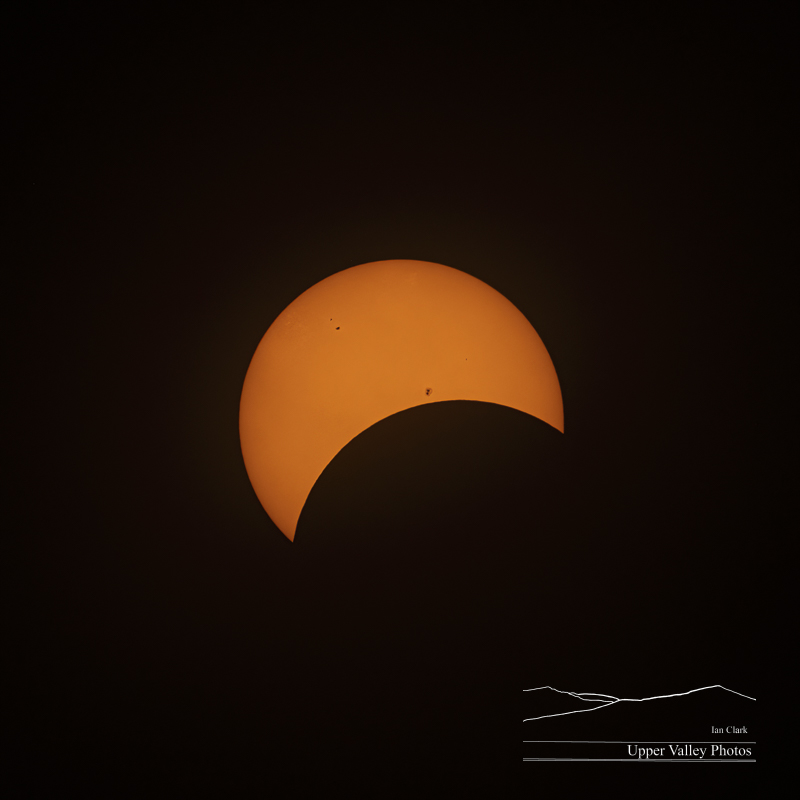
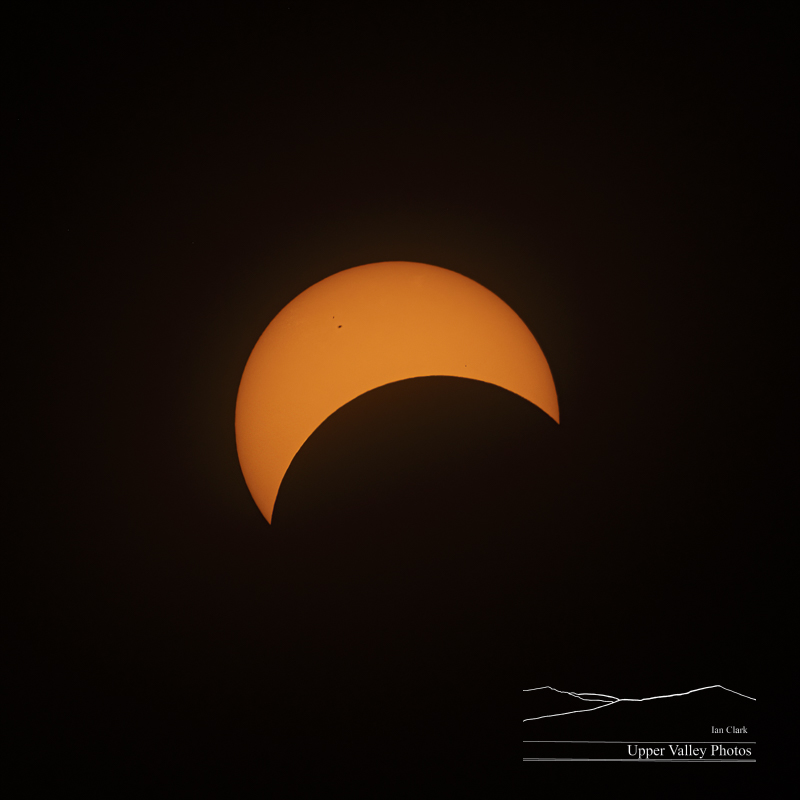
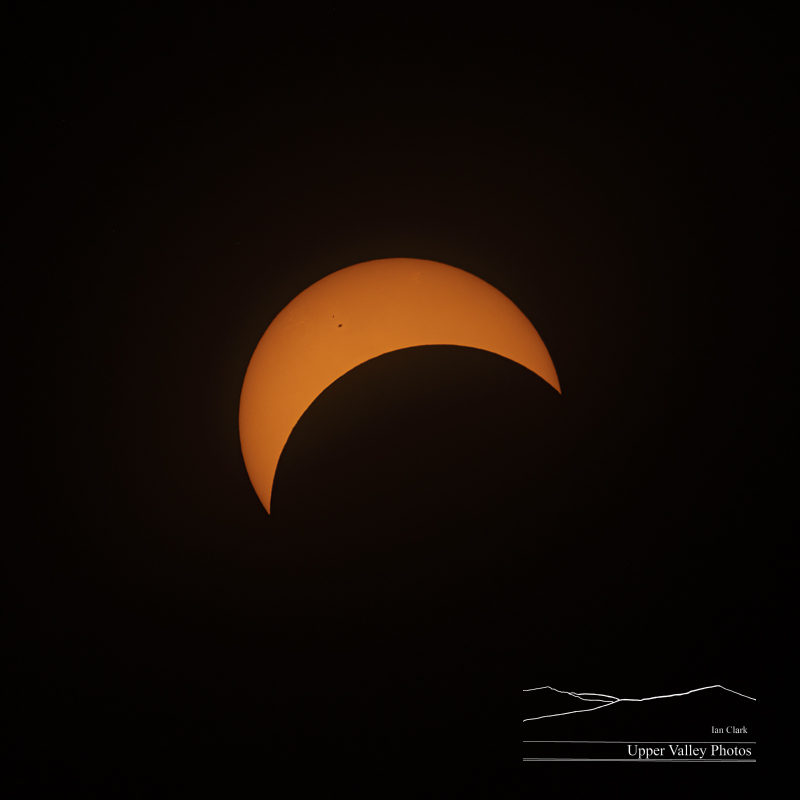
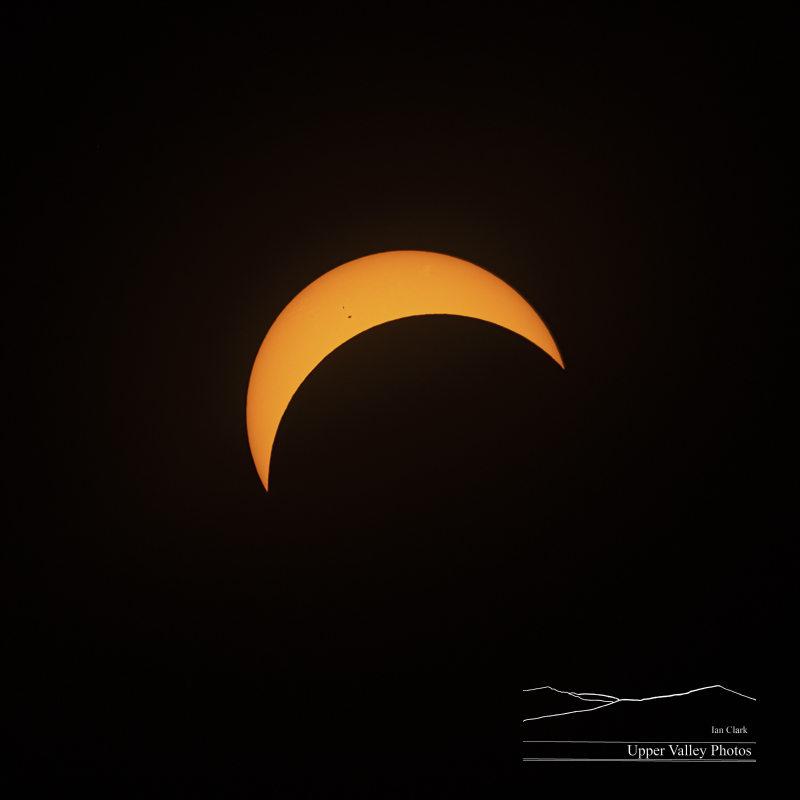
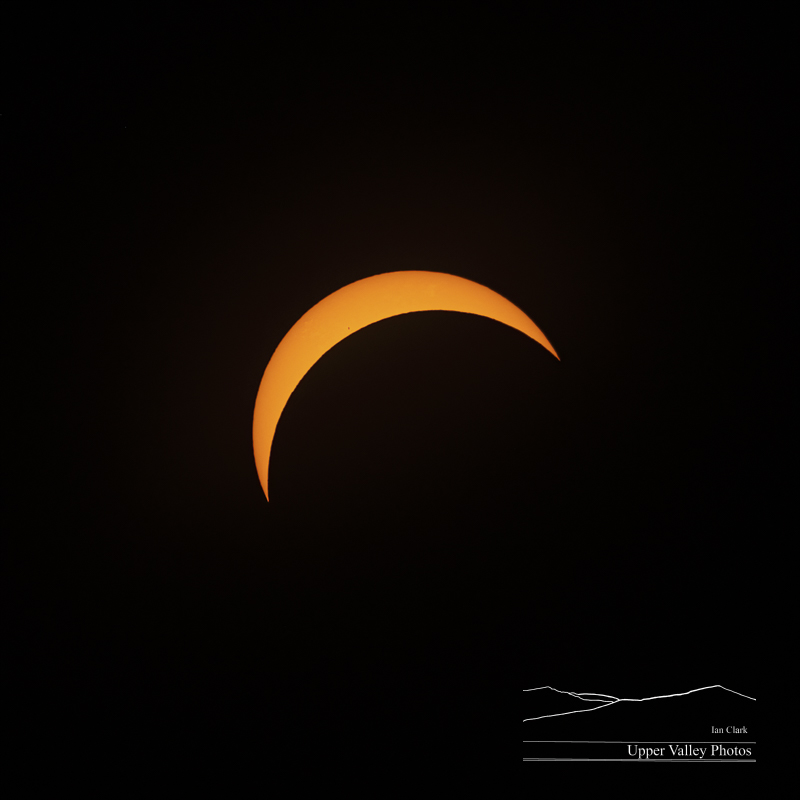

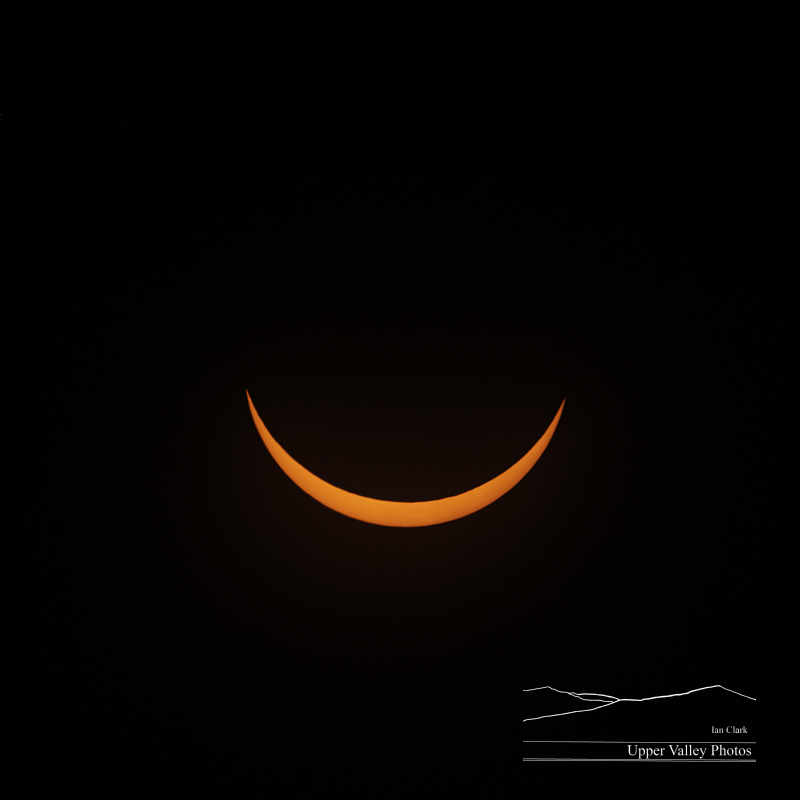
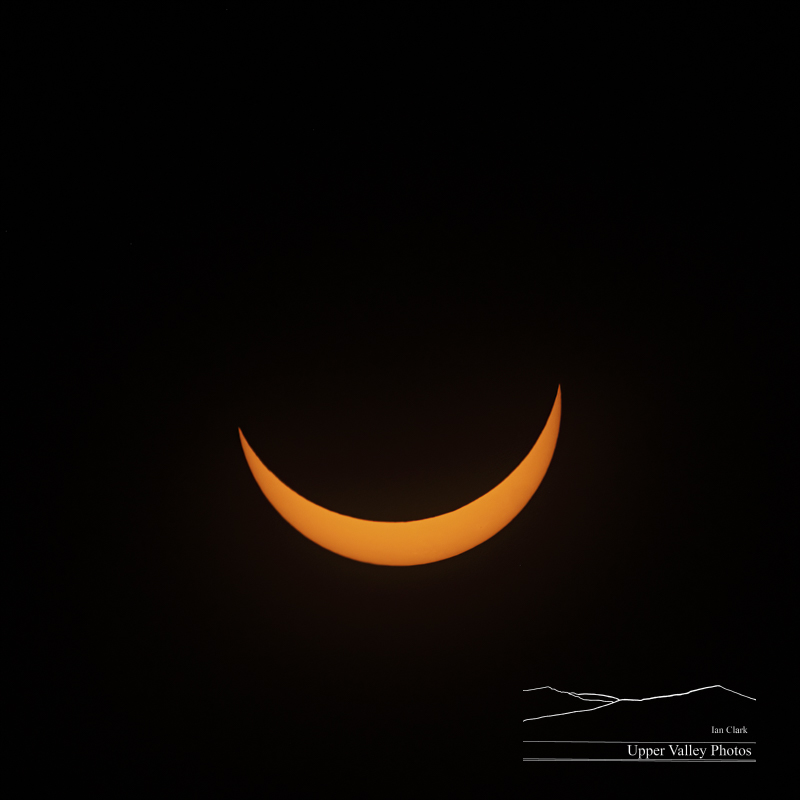
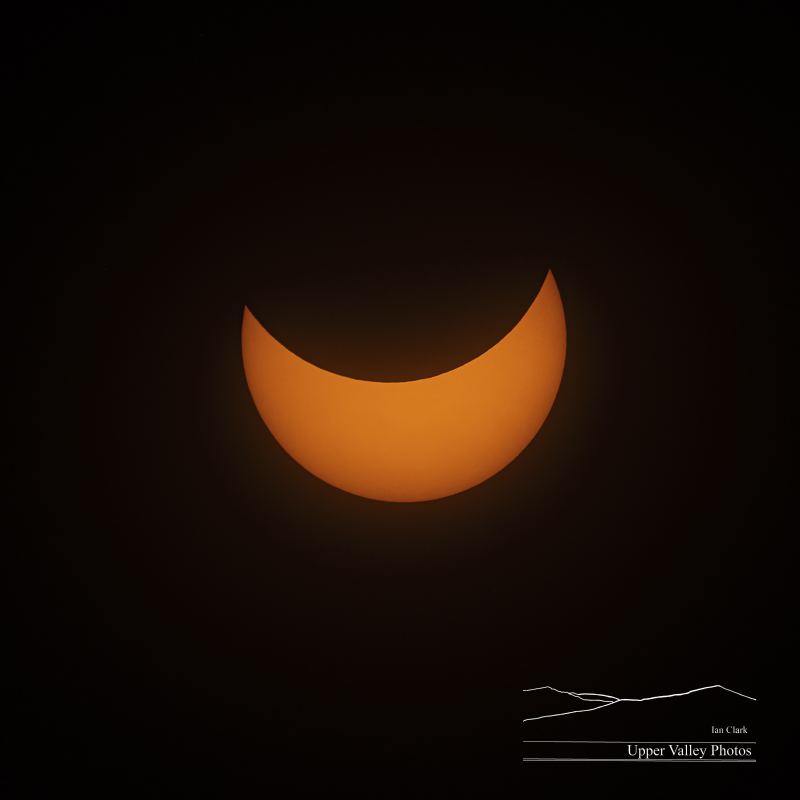
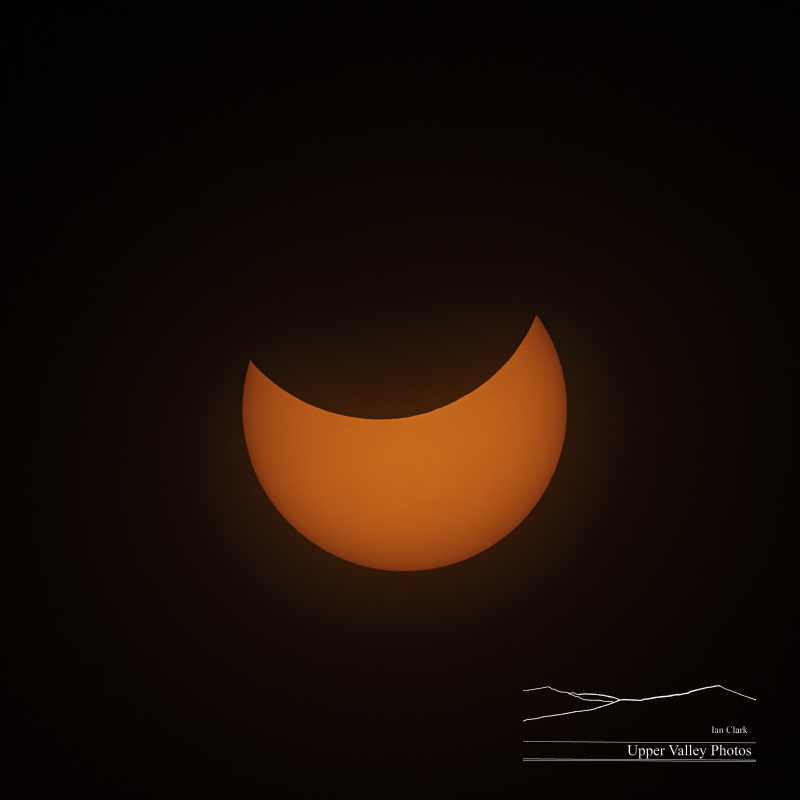
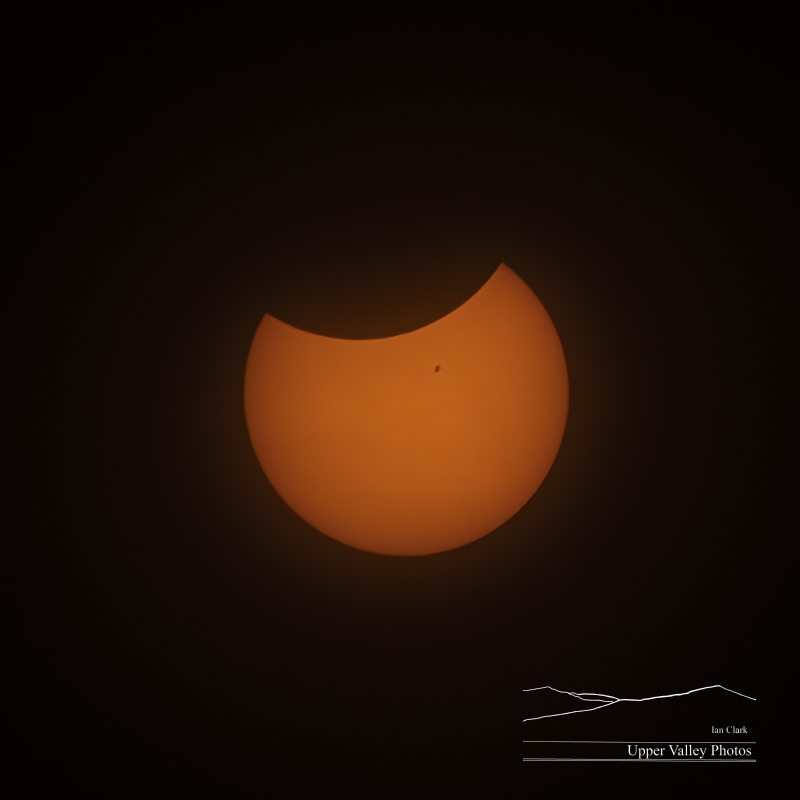
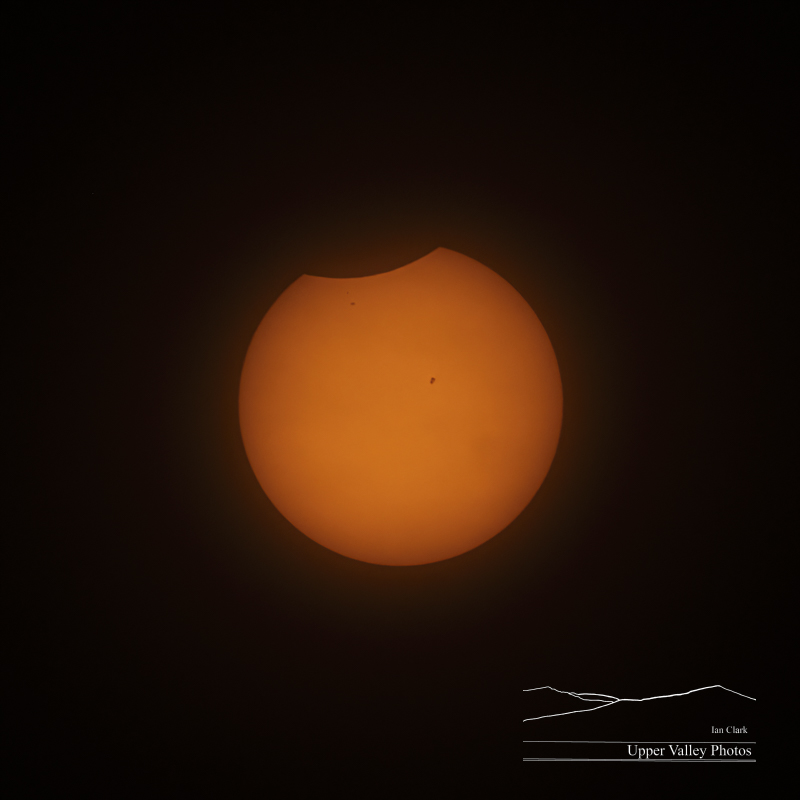
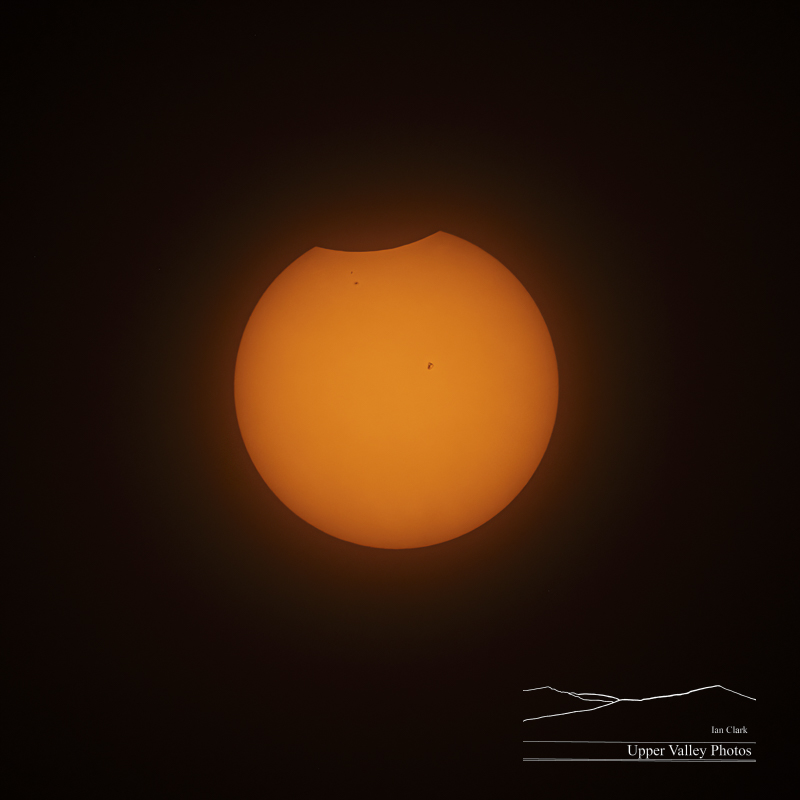
I’ve got a great deal on some eclipse glasses for you……
Hope to see you all at one of the 11,897 eclipses we’ll have before 3,000 CE.
Loons should appear sometime in the next week. I’ll be checking regularly.
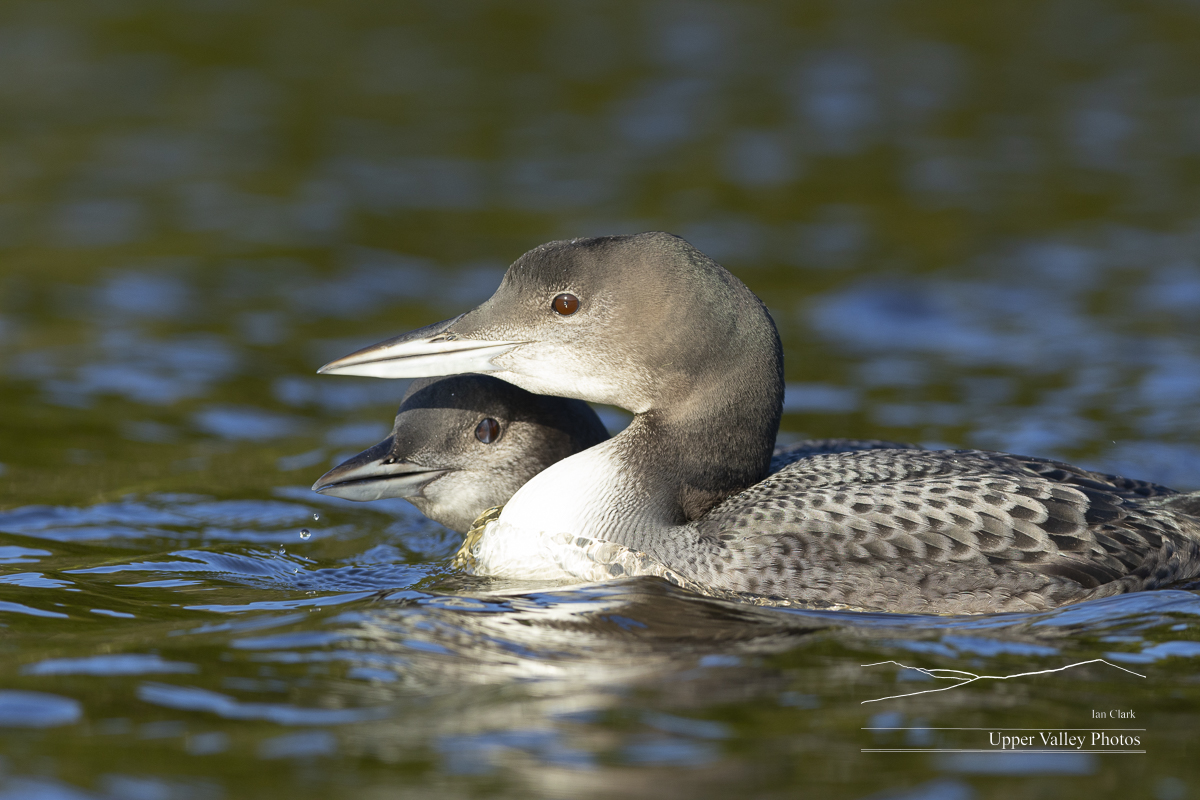
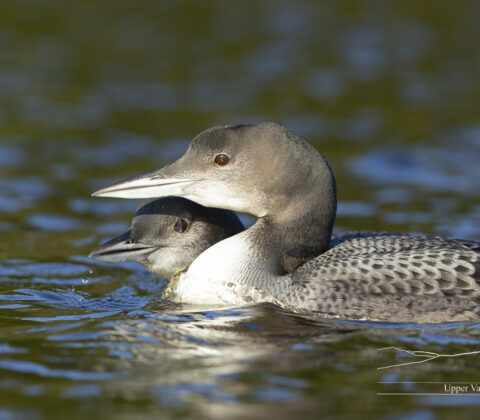
Loon Chicks at 10 Weeks
Monday morning there were stars above and a thick fog over the river in the valley below. I decided to risk a trip to visit the Eastons. Most of the trip to the pond was slow going through the fog. As I started to climb towards the pond, I rose back above the fog to find a beautiful morning.
Dad was foraging by himself near the boat launch, he paddled in close to hoot softly to me before returning to feasting on crayfish. Mom called a couple times while I was getting the boat in the water. This is the pond where Dad is banded, letting me tell who is who if I can see a leg.
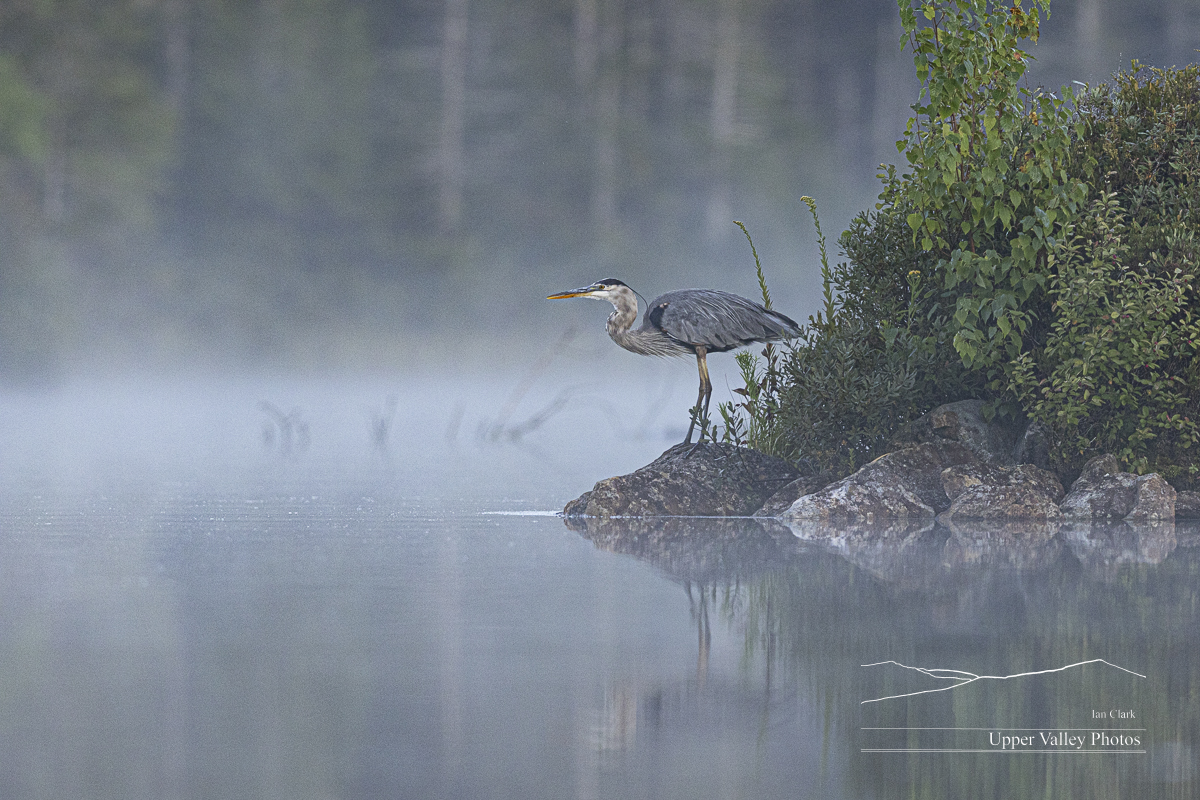
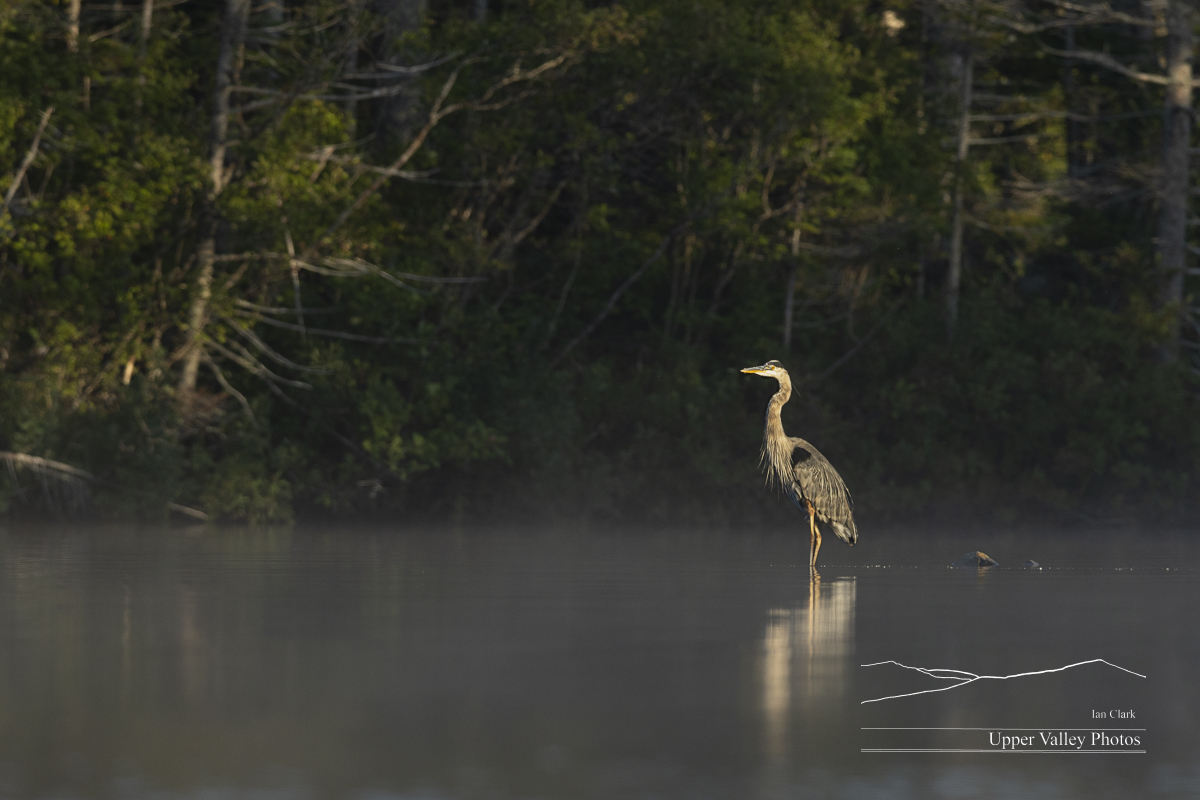
The chicks were keeping mom busy. They’re very demanding, poking and pulling feathers whenever she got near. She didn’t spend much time on the surface, she’d dive quickly when a chick got near. I’m convinced this is why the parents leave the pond before the chicks – they just want some peace.
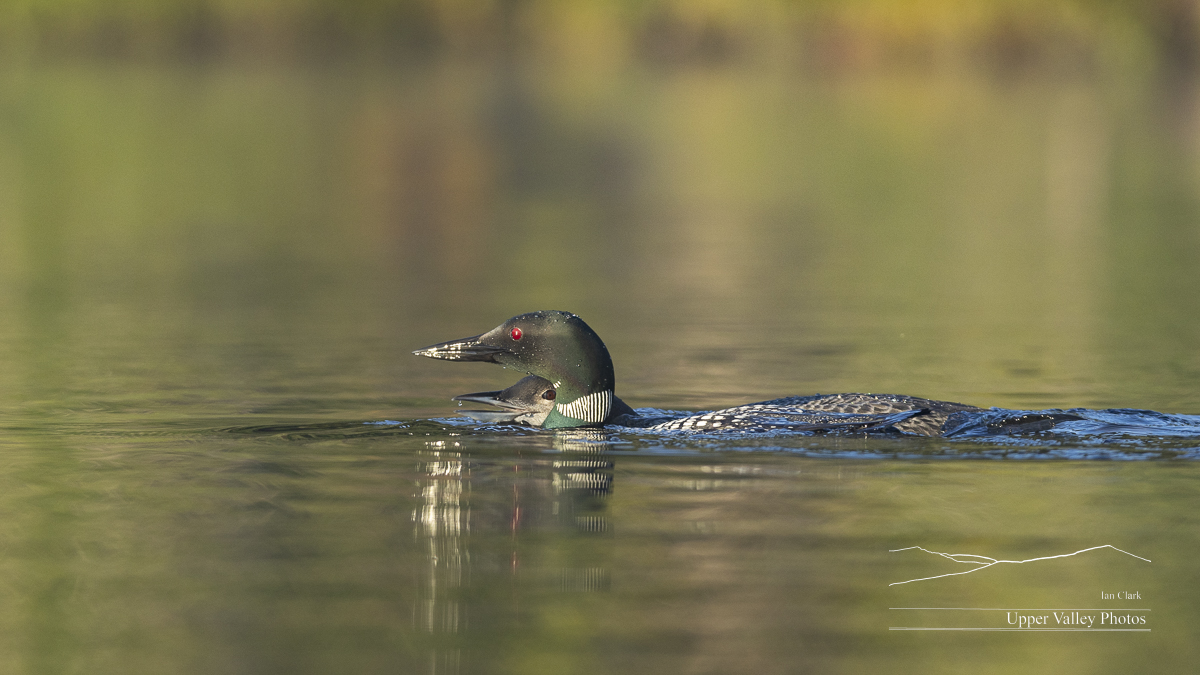
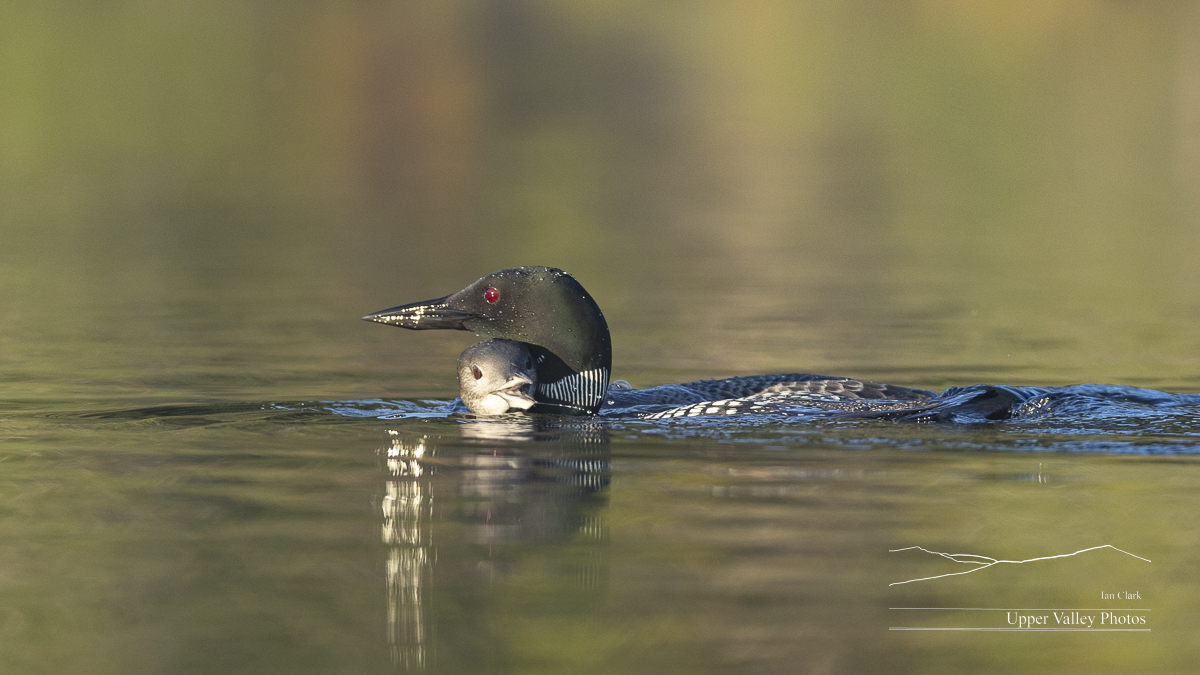
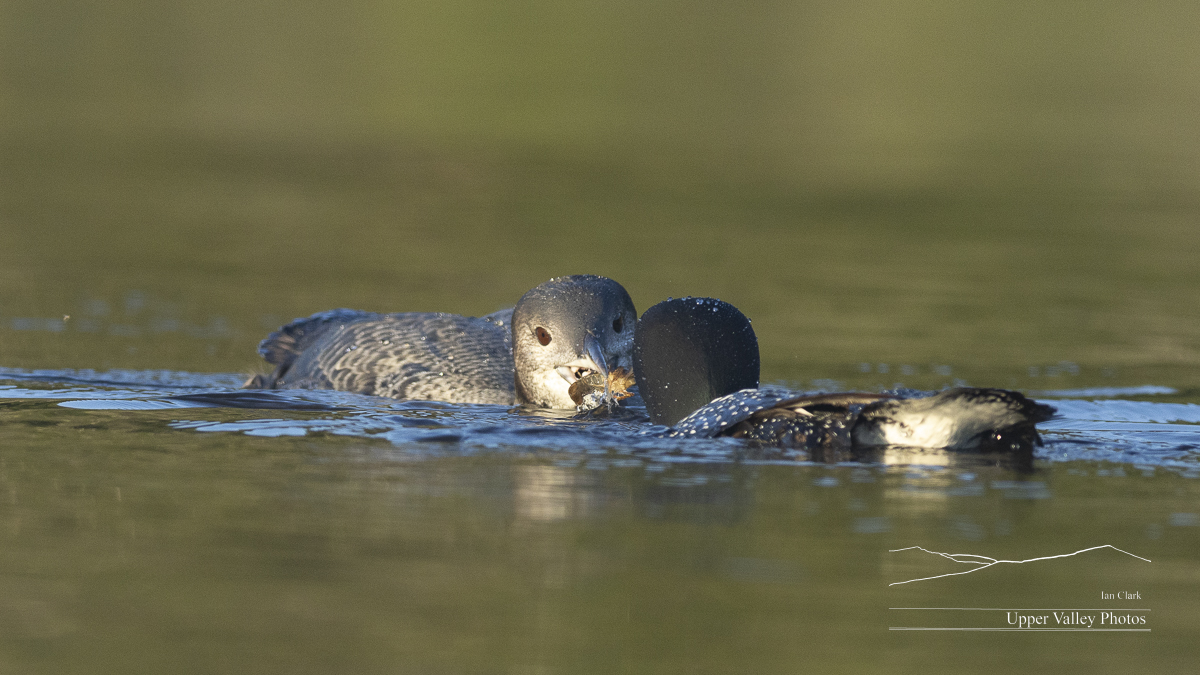
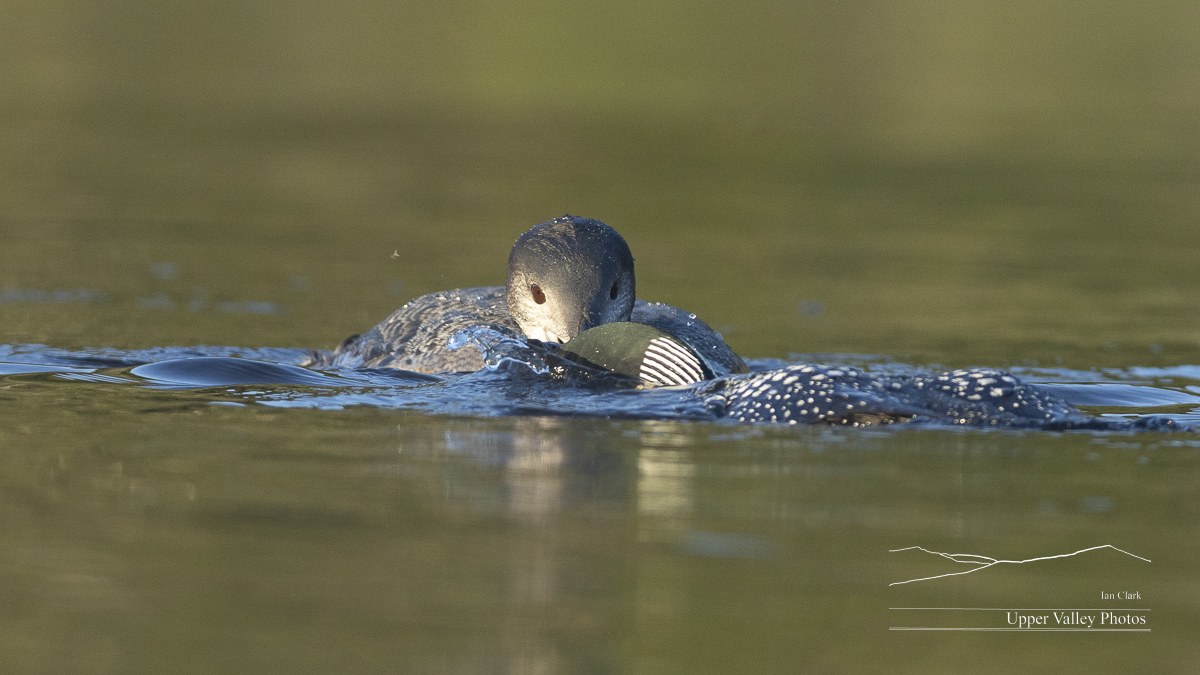
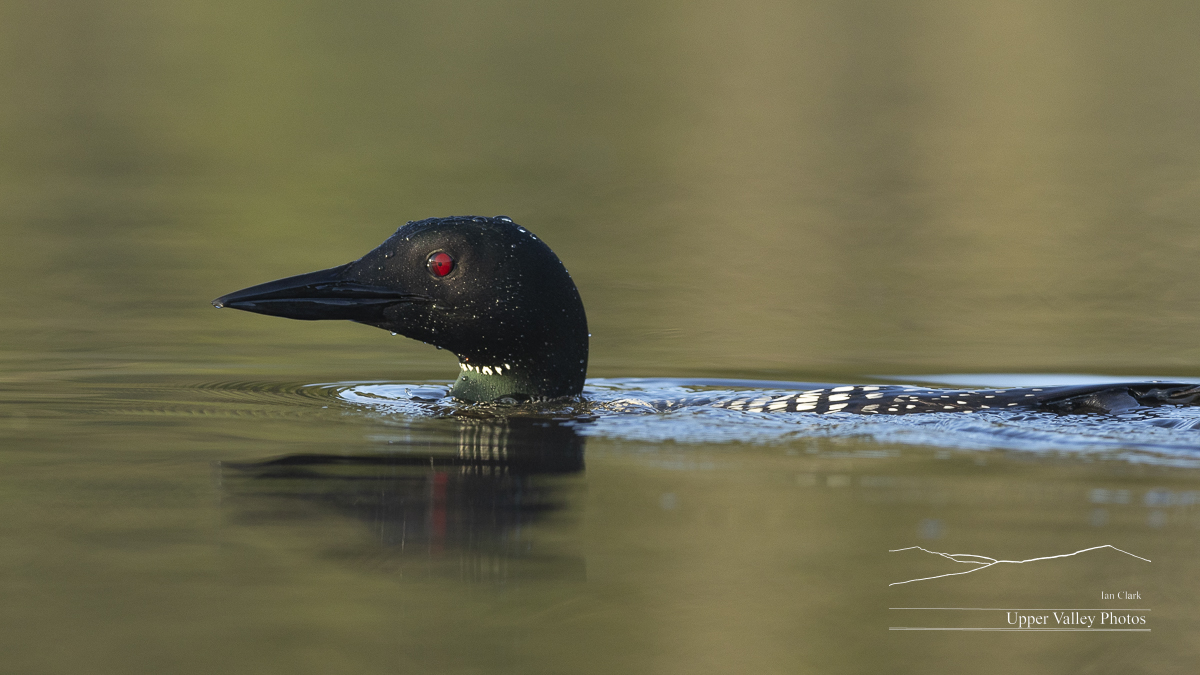
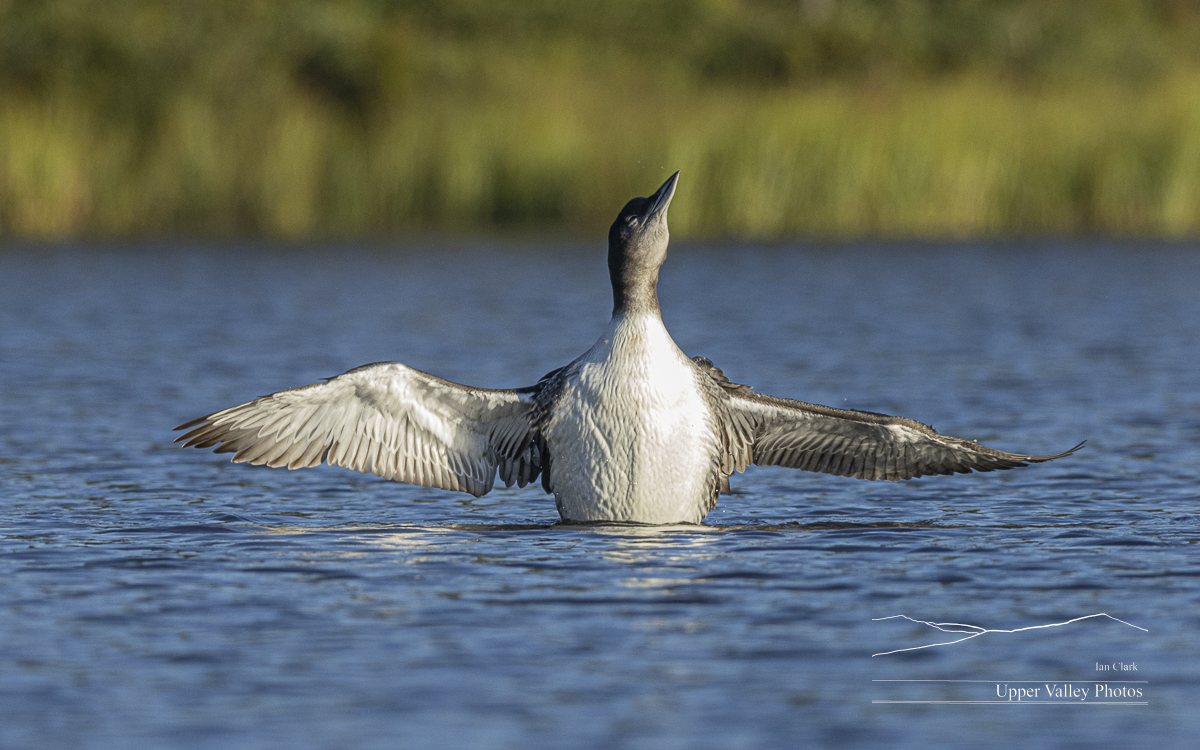
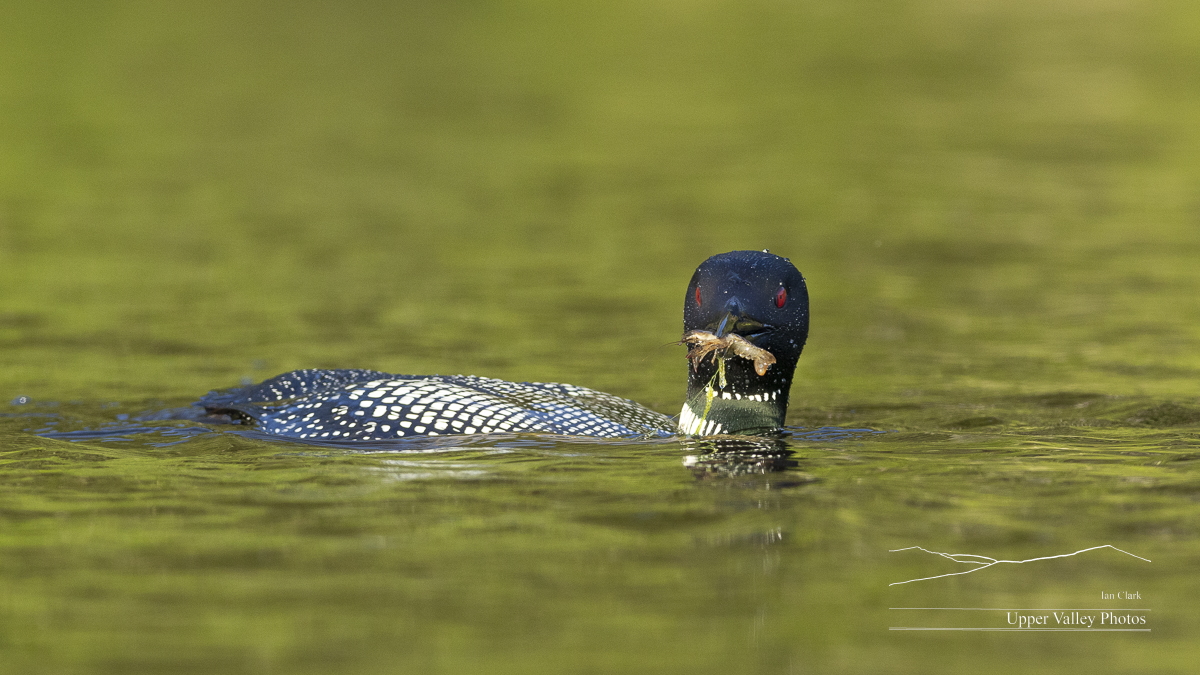

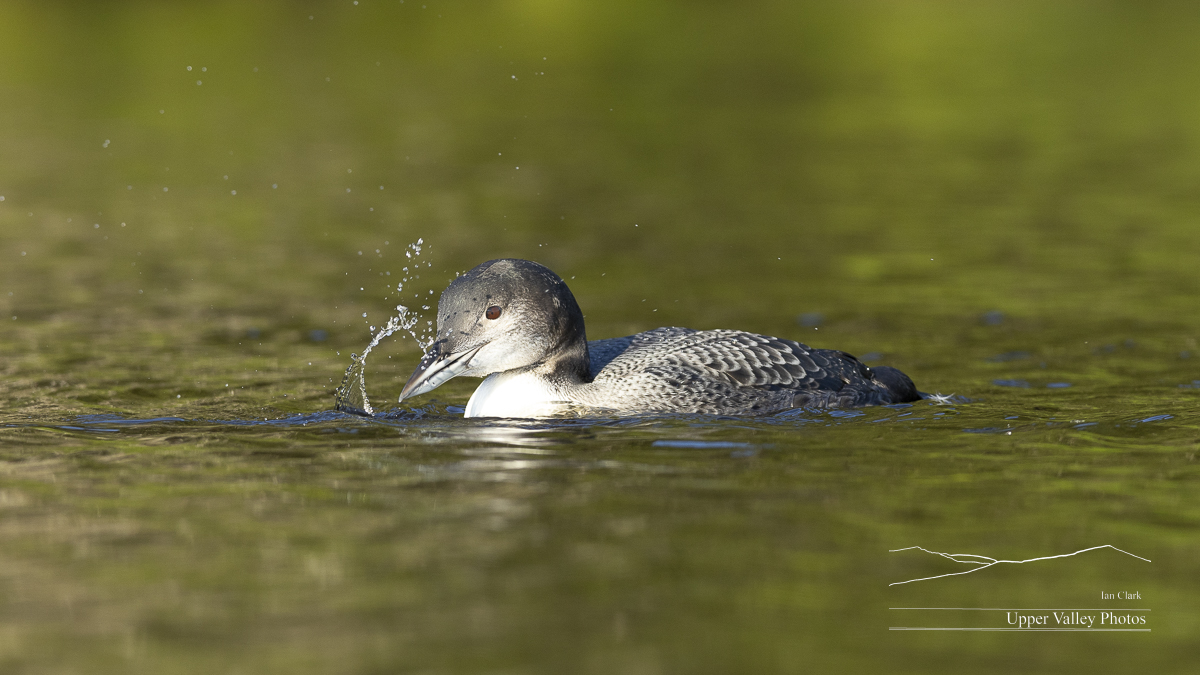
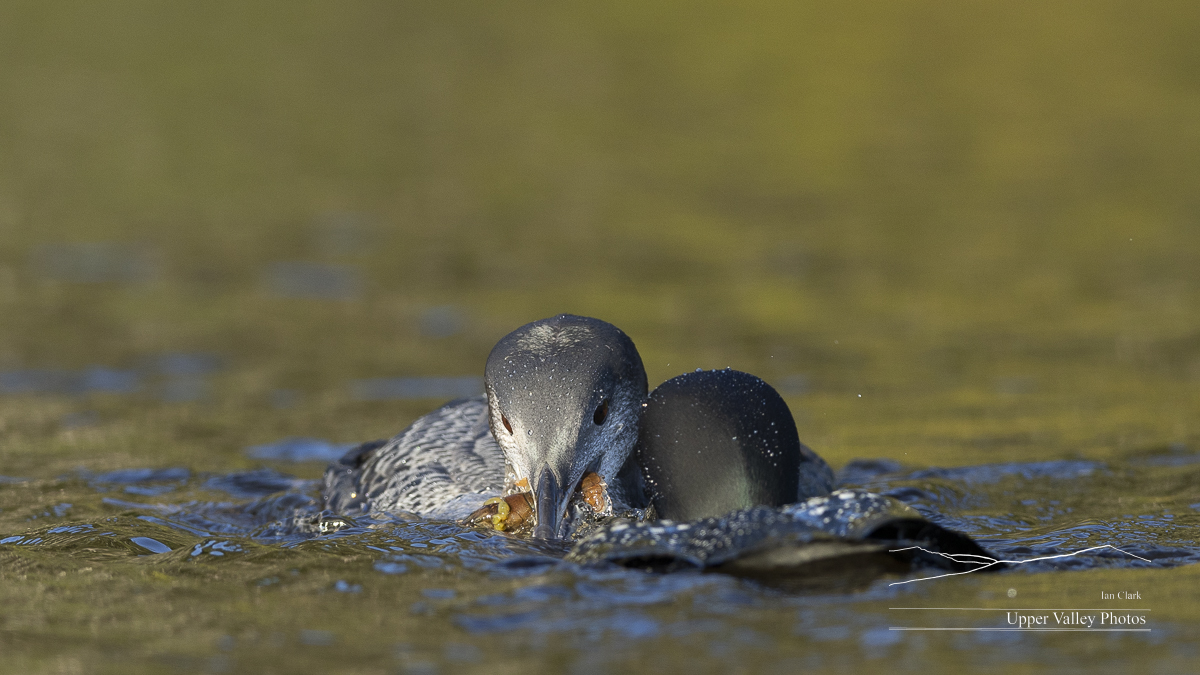
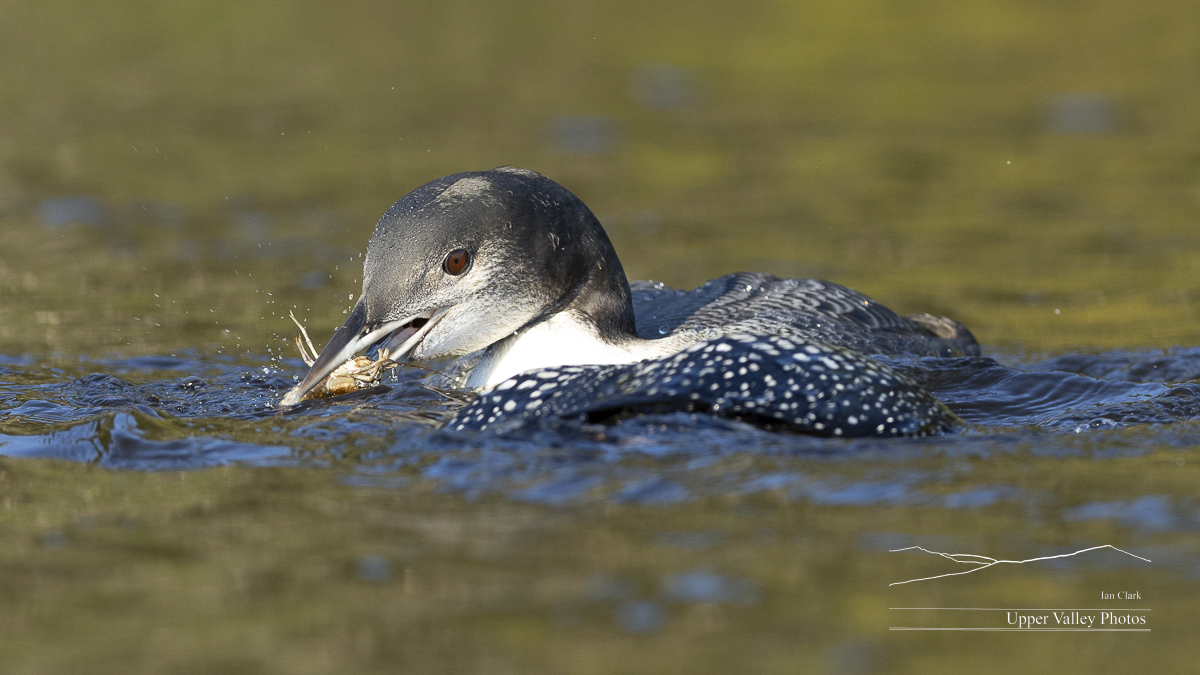

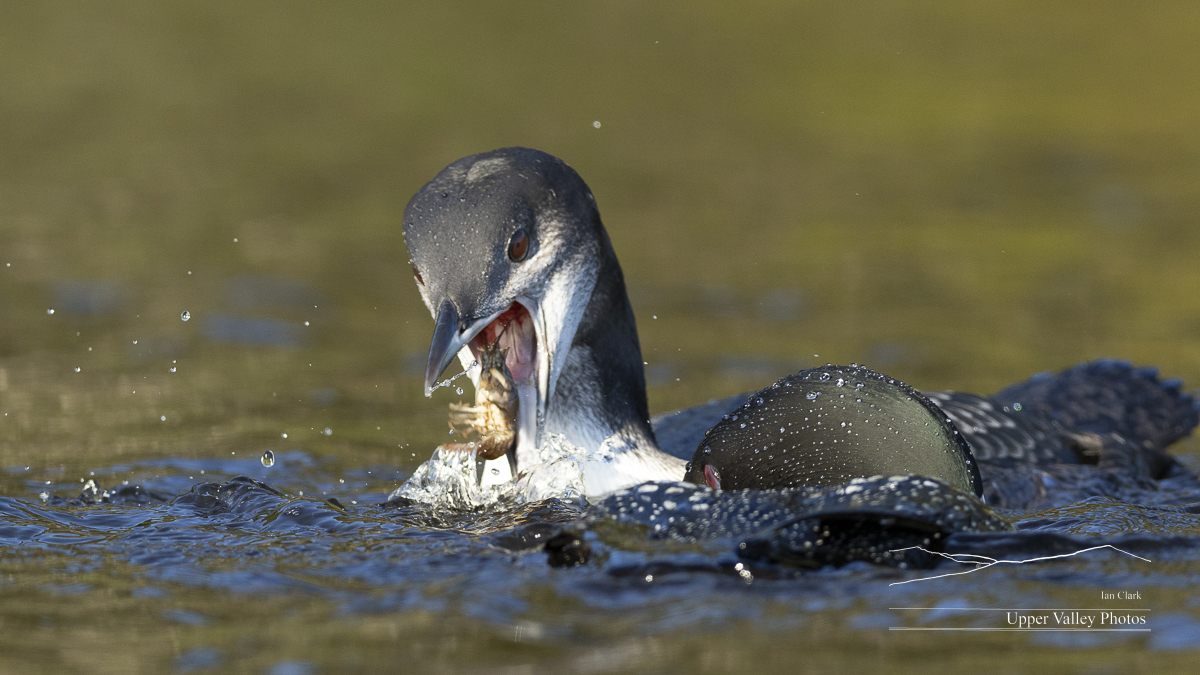
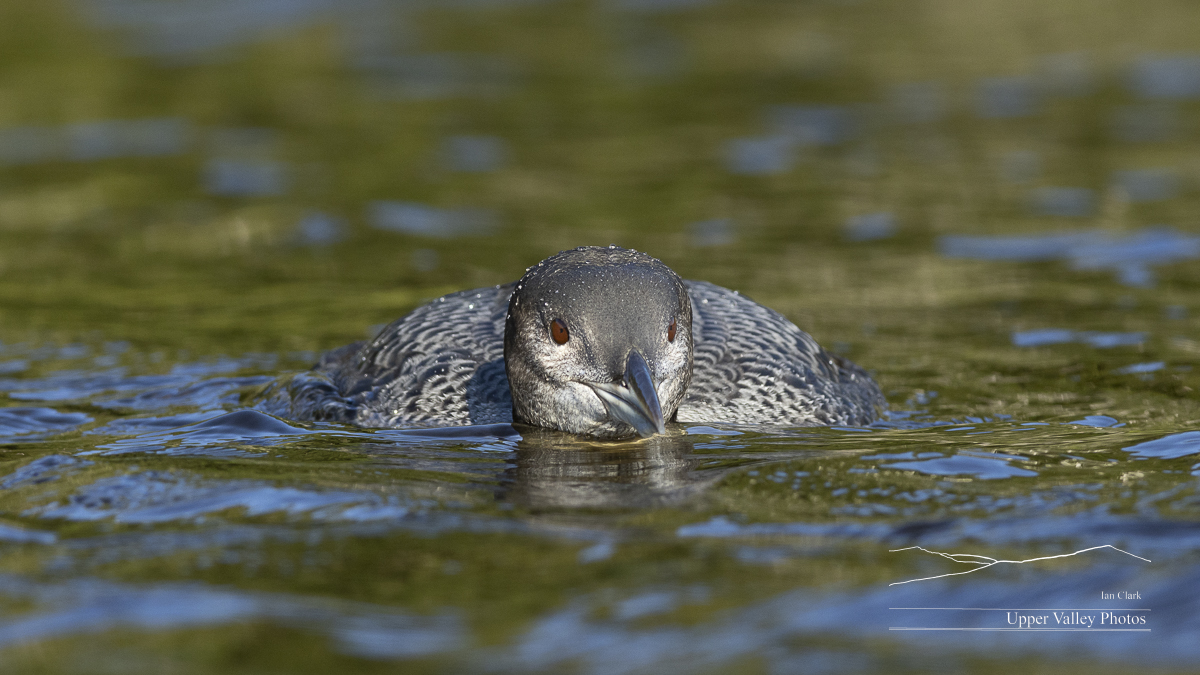
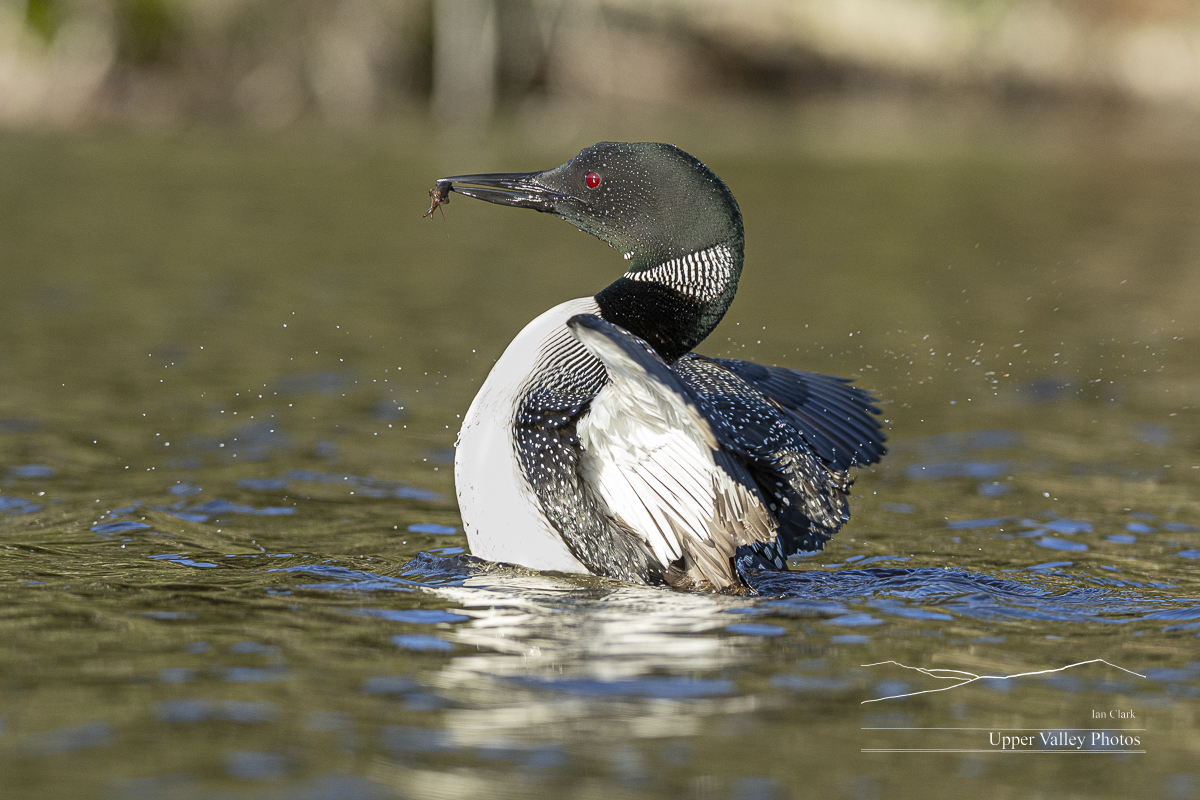
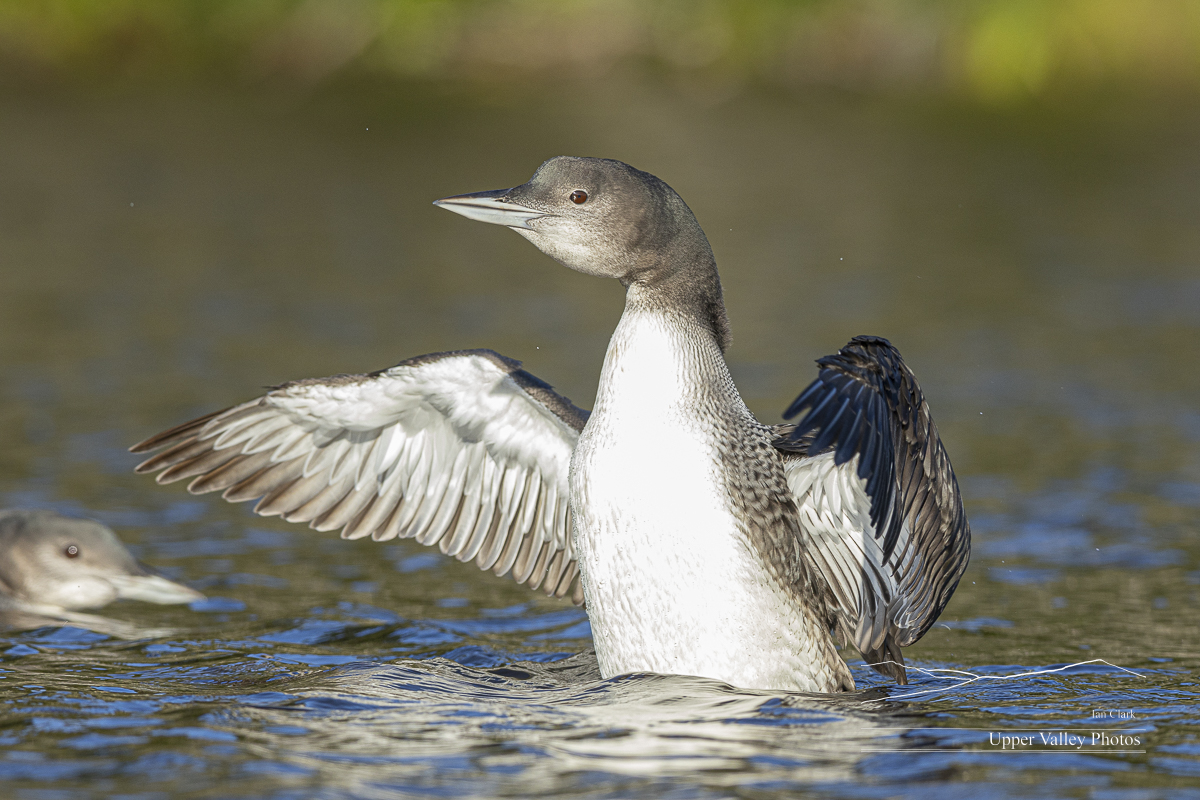

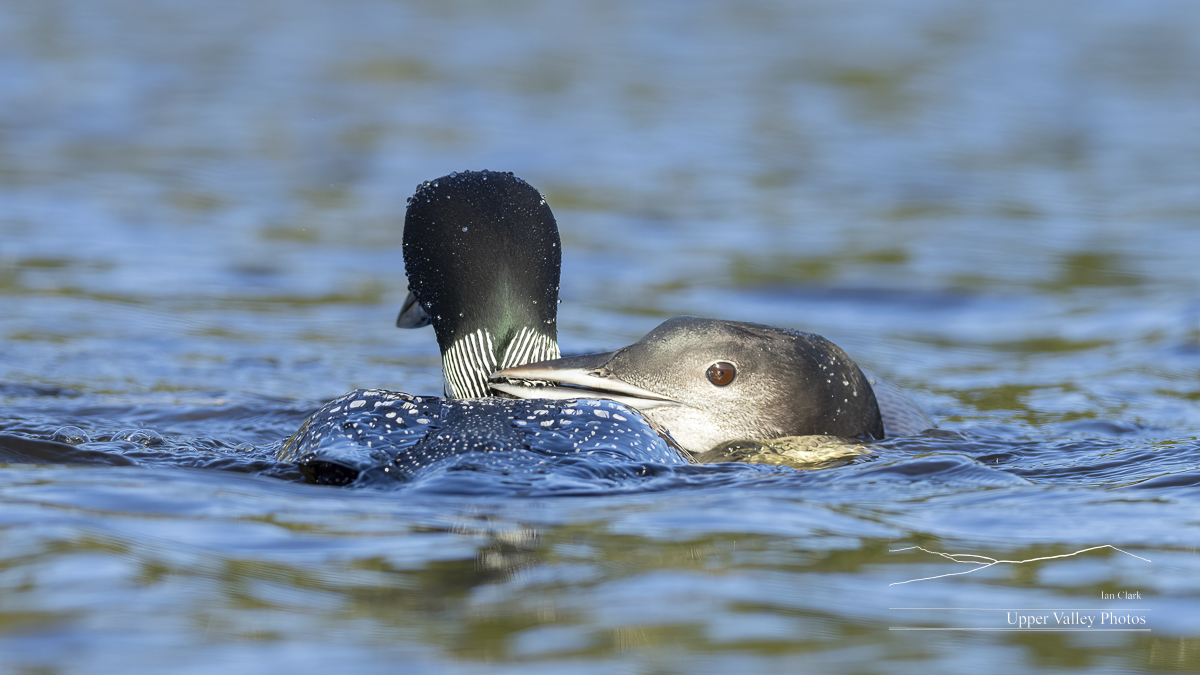
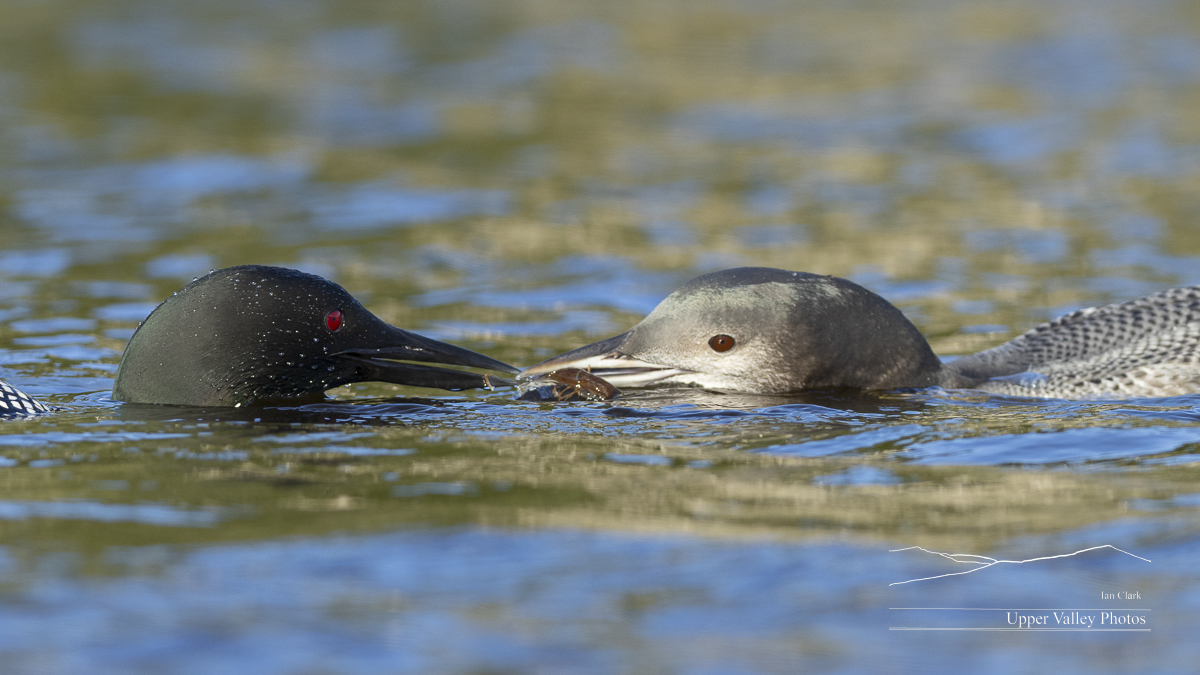
Heading back to the boat launch, I pass dad who is lazily paddling along, seemingly enjoying the peace and quiet on this end of the pond.
I was surprised the fog hadn’t shown up on the pond, there’s usually a period where the pond gets foggy as the fog lifts from the valley. Driving back towards home, I discovered why – the fog was still sitting heavy on the river.
Back at the house, the goldfinches have discovered the thistle I left for them.
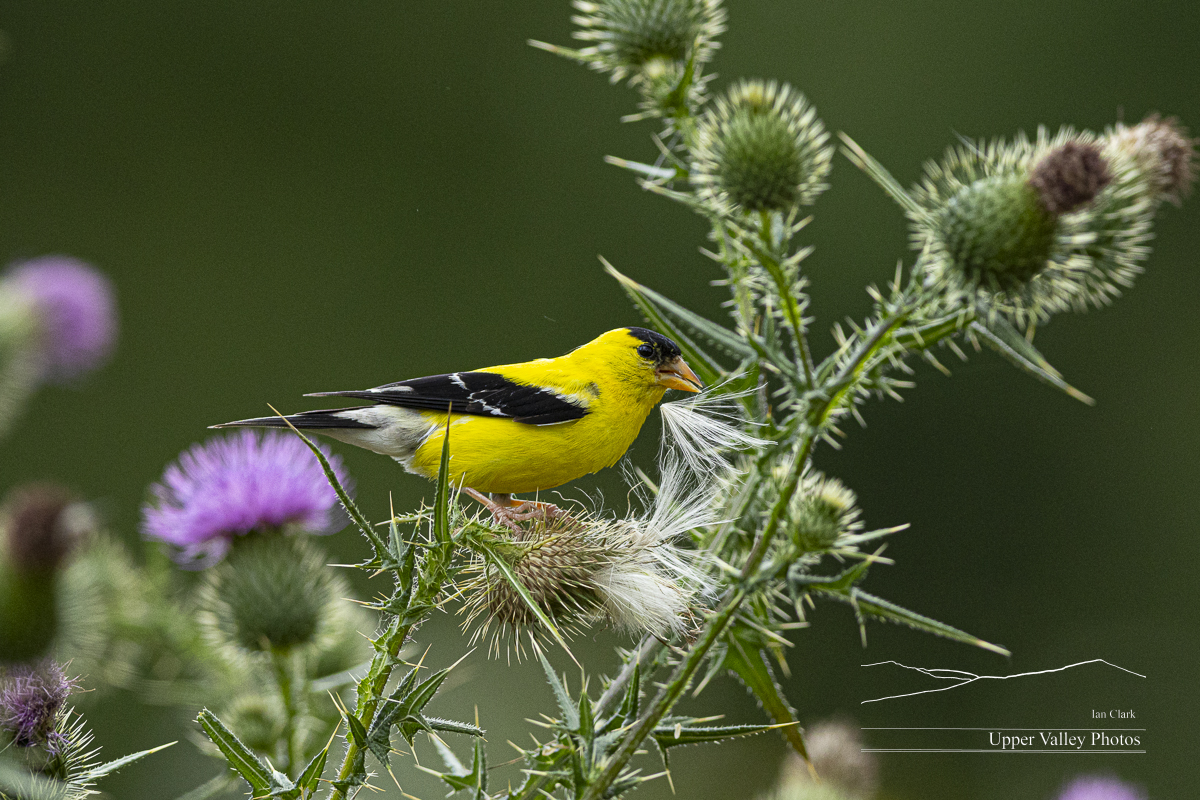
Mother’s Day with the Bluebirds
Mom and dad are taking it easy again this afternoon, with fewer trips into the box with food. I suspect the pickings are easier in early and late in the day. I’m sure the chicks will get a good dinner later. Happy Mother’s Day!
Probably won’t have time for a post tomorrow, I’ll be on the road most of the day.
We’re watching eastern bluebirds in a nesting box with a camera installed inside to let us watch without disturbing them. The camera switches to black & white in low light. And, the exposure control stinks, that’s why it washes out or goes black as a bird comes or goes. We occasionally get some pixelated frames in the video, I think that is a WiFi issue. A new WiFi repeated is on the way.
Bluebird Chicks Are Hatching
Our bluebird chicks have started hatching. Two hatched before my bedtime last night, a third overnight. We’ peeking in this morning. Mom is sitting on the nest, sometimes resting, sometimes tending the chicks. Dad shows up with snacks and pops in to check things out.
We’re watching eastern bluebirds in a nesting box with a camera installed inside to let us watch without disturbing them. The camera switches to black & white in low light. And, the exposure control stinks, that’s why it washes out or goes black as a bird comes or goes.
A Look Back at Our Loons in 2022
Lazy photographers everywhere squeeze an extra post out of their favorite pix of the previous year. Why should I be different? Let’s look at some of my favorite pix of our loon families from last summer.
If you liked following the loons on my blog, you might be interested in seeing my presentation An Uncommon Look at the Common Loon. I’ve put together a PowerPoint presentation with some natural history of loons and we’ll follow a loon family from nest to the chicks in flight. I’ll be giving the presentation a couple times this week.
The first presentation will be at the Thompson Center in Woodstock, VT, this Thursday, January 12, at 1:00 p.m. The second presentation will be at the Blake Memorial Library in East Corinth, VT, this Friday, January 13, at 6:30 p.m. Both are free and everyone welcome.
And, if your interests include steam locomotives, I’ll be giving my presentation Under Steam at the Bugbee Senior Center in White River Jct., VT, on Wednesday, January 25 at 1:00 p.m. We’ll take a look at some of the US’s remaining operating steam locomotives. I’ve been tracking down the last steam engines since the 1970s, this show looks at the highlights from coast to coast. Also free and everyone welcome.
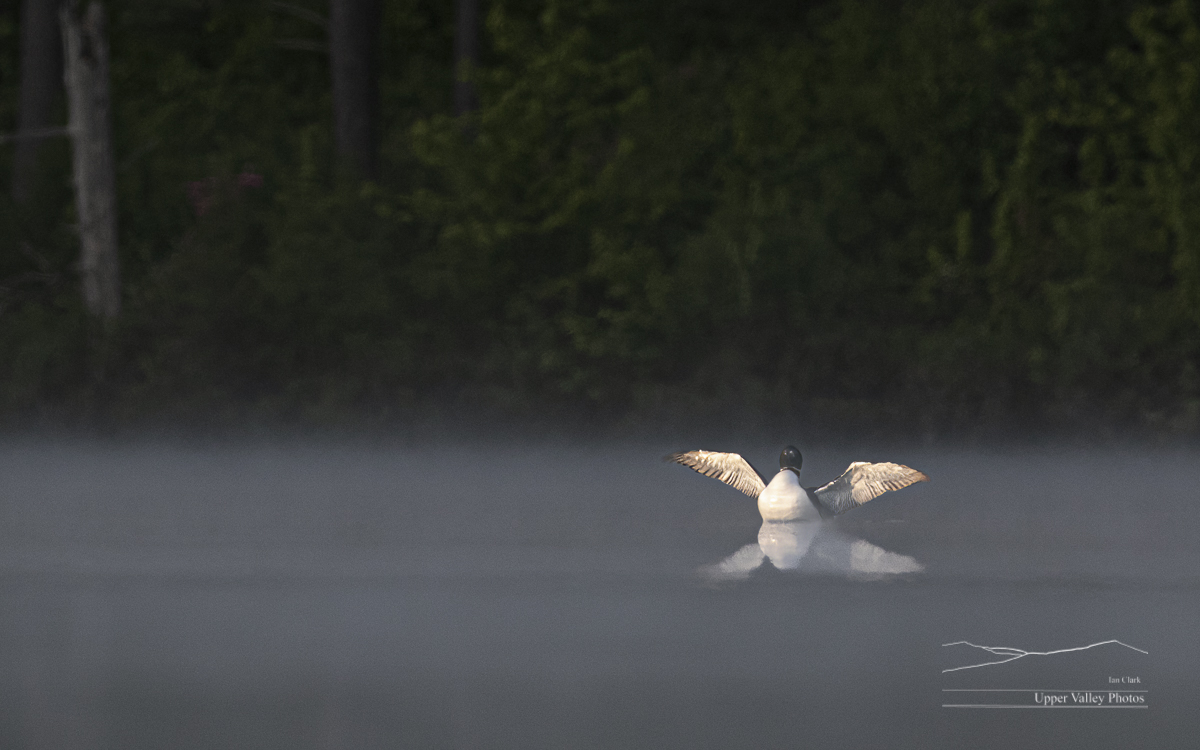
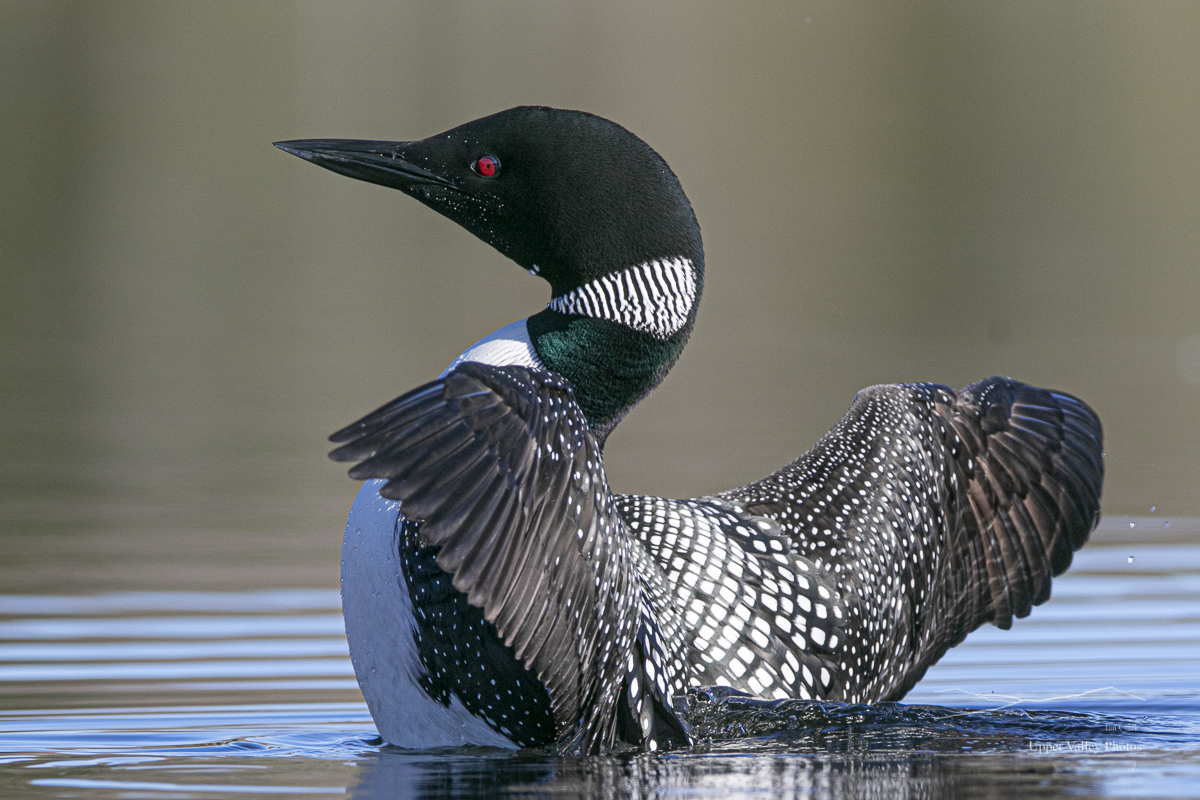
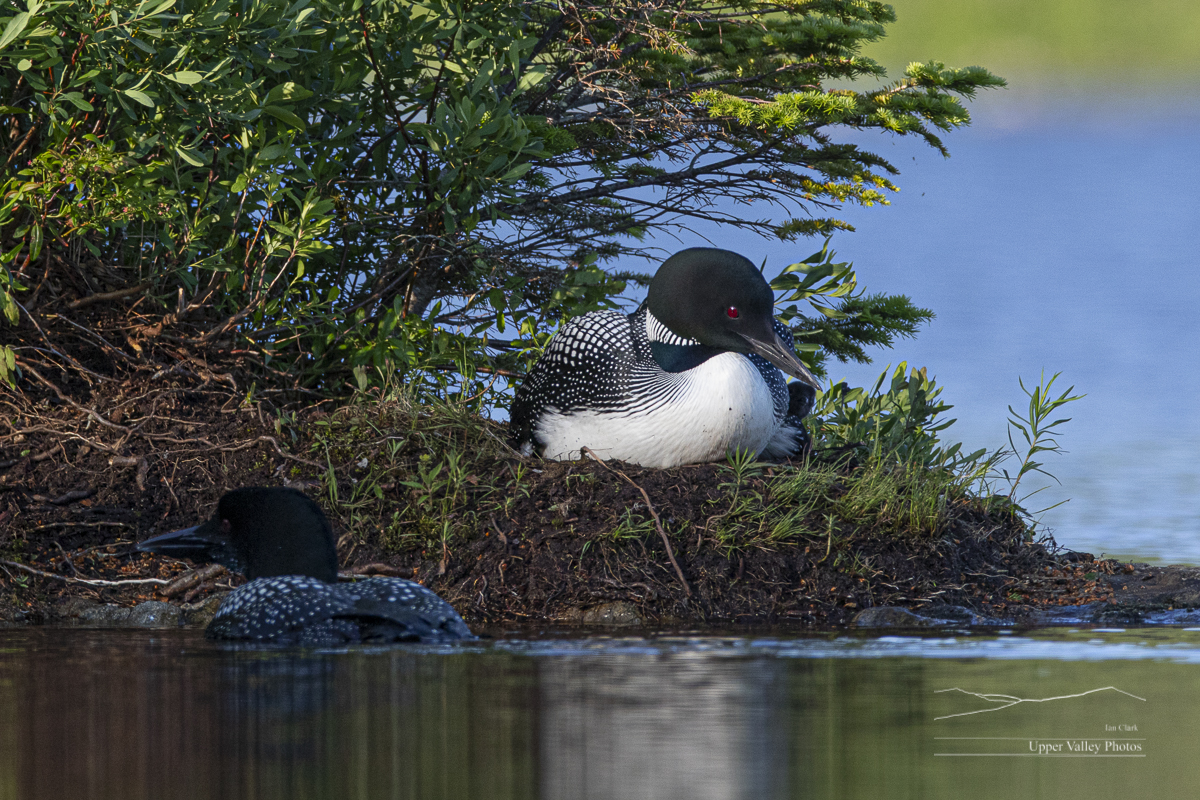
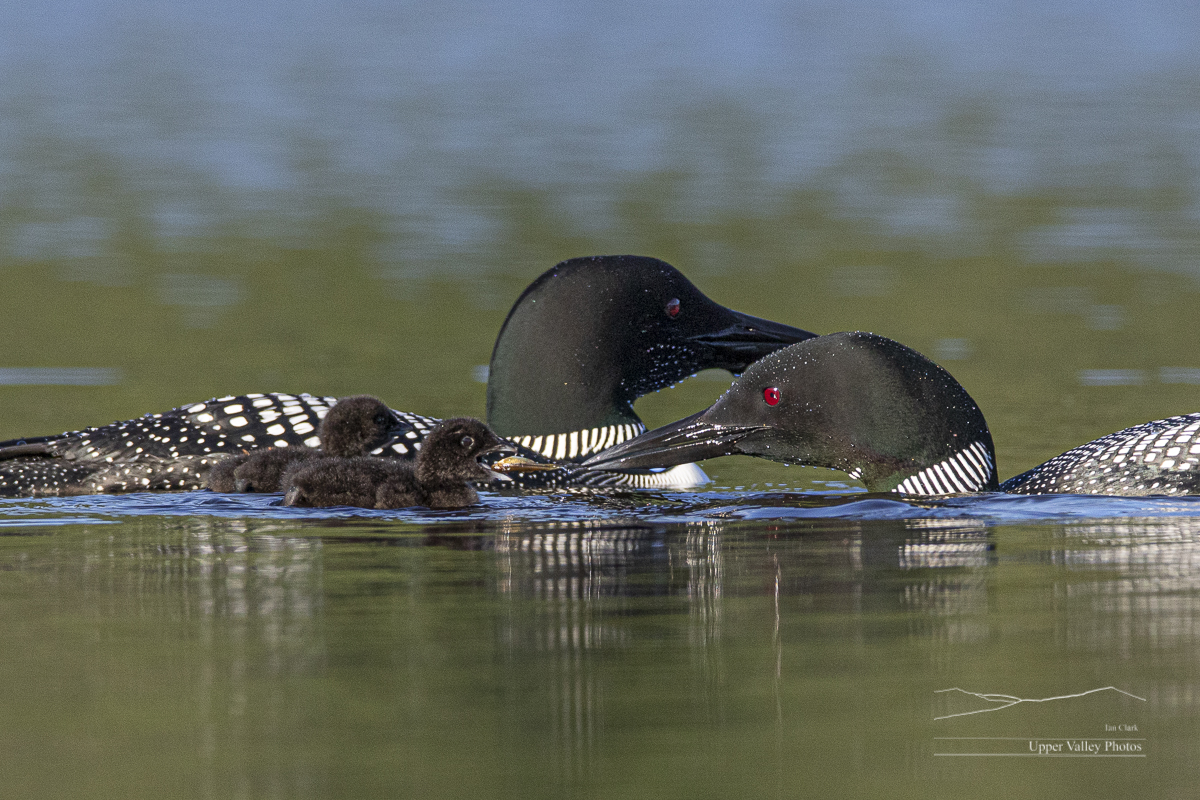
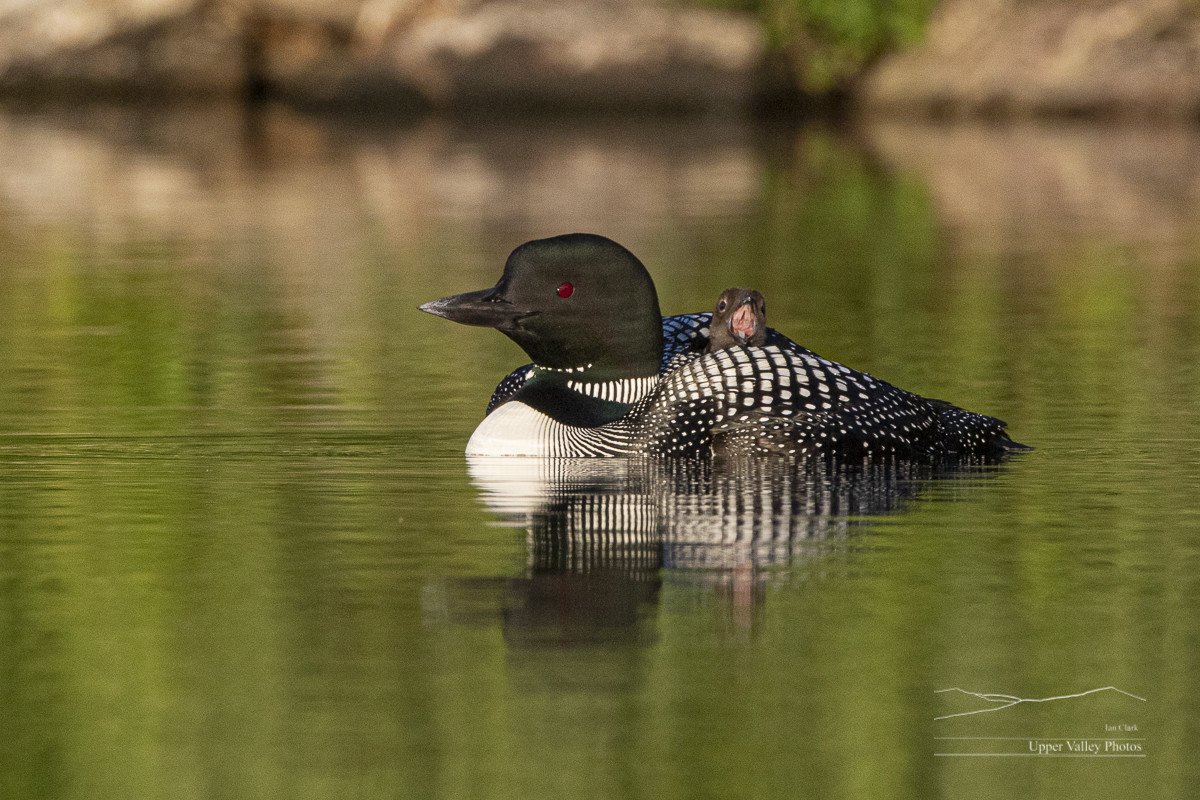
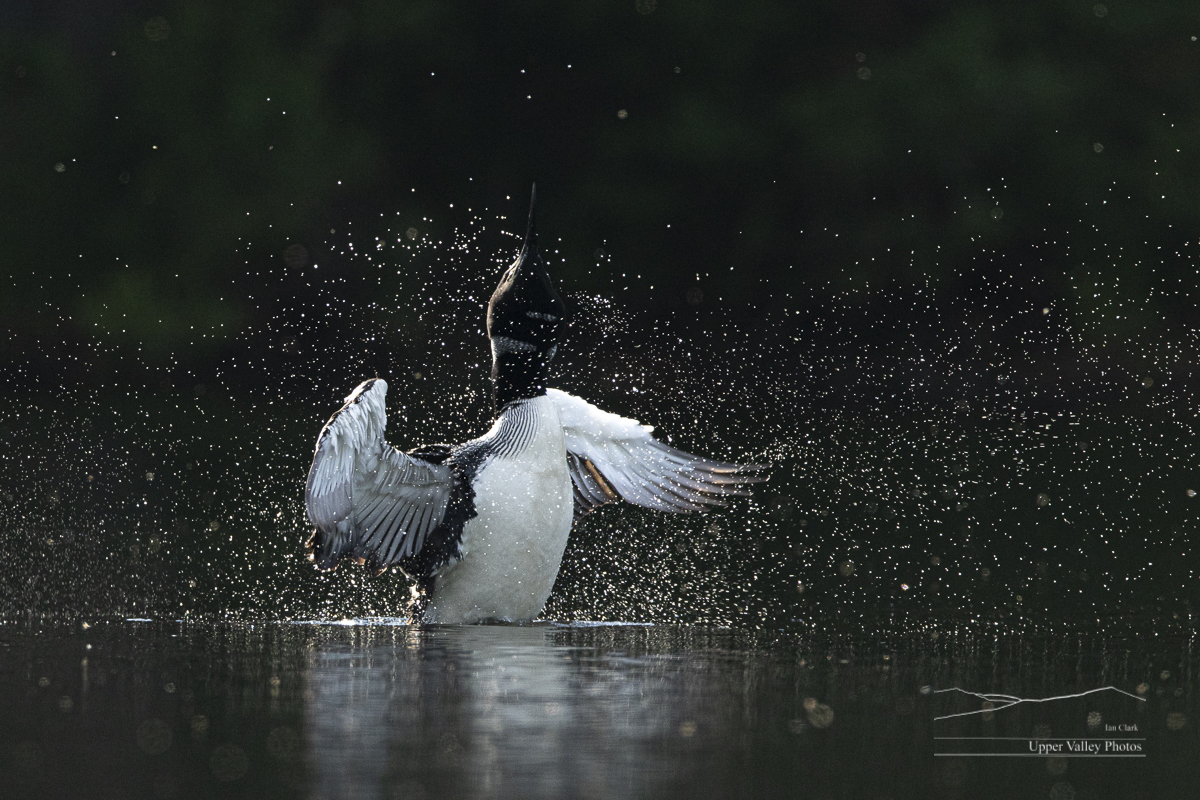
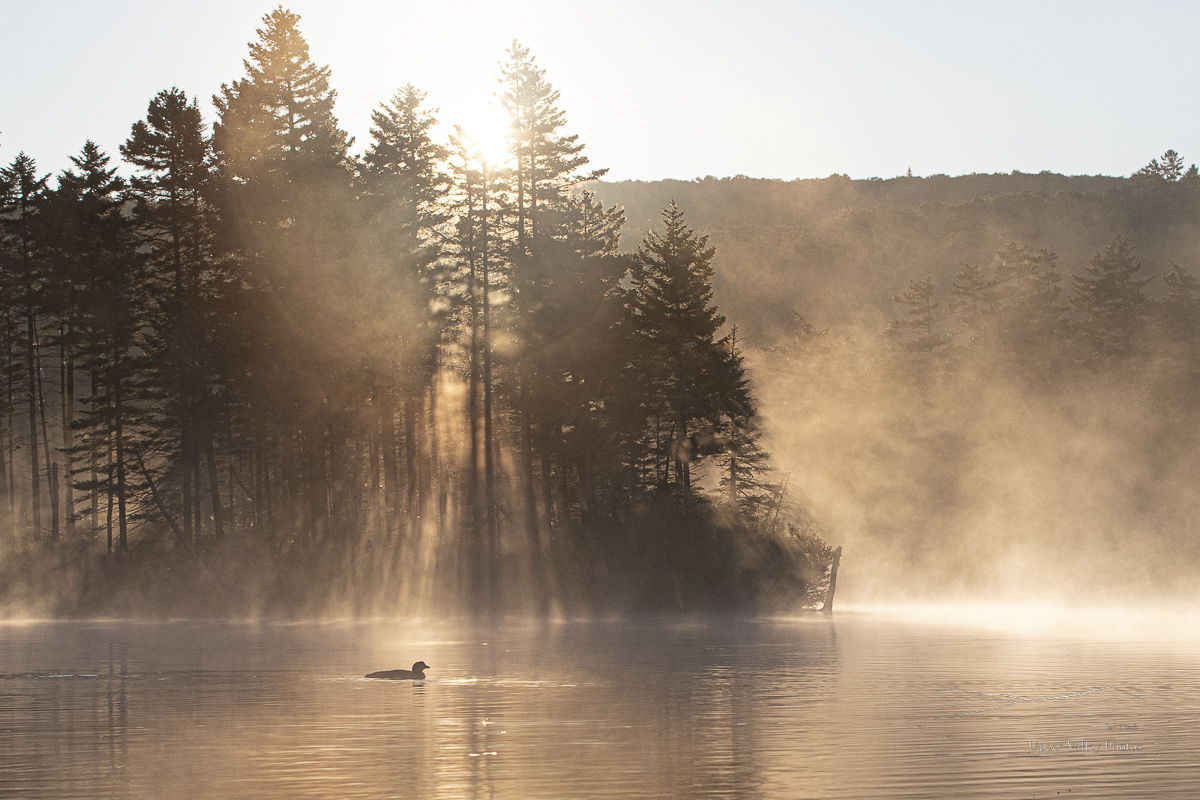
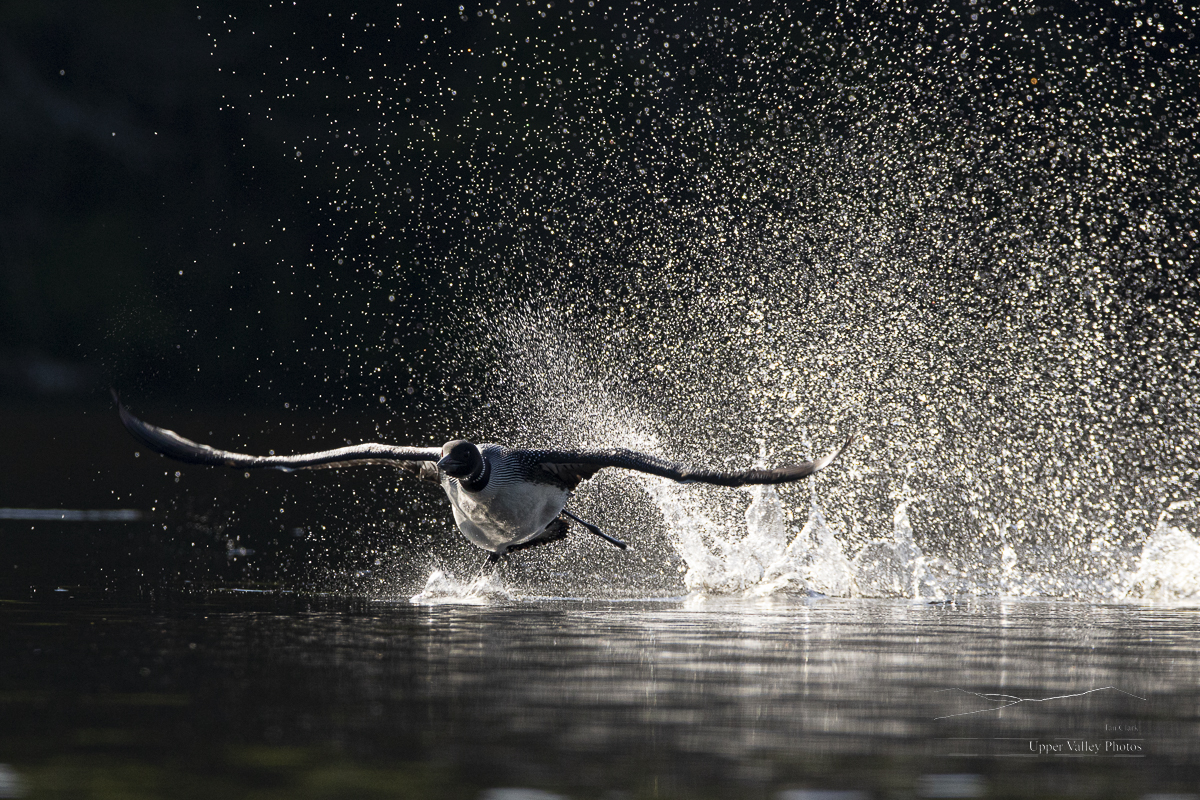
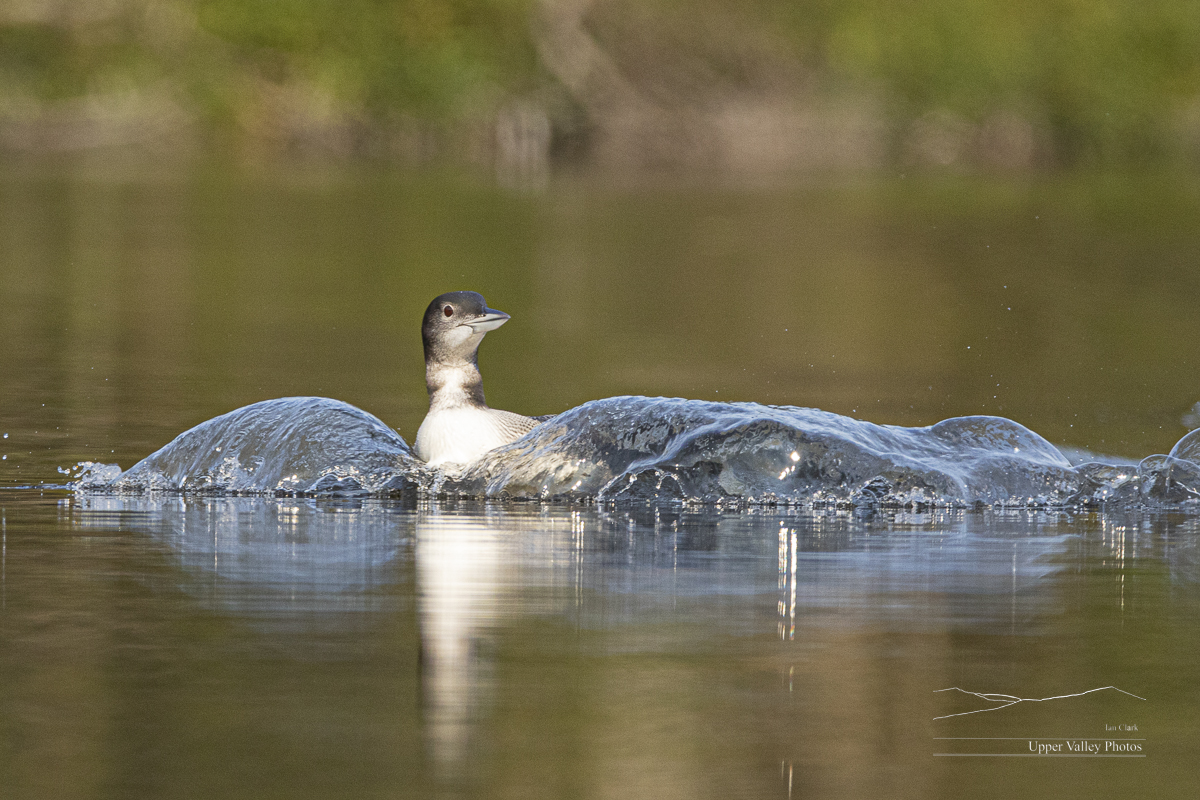
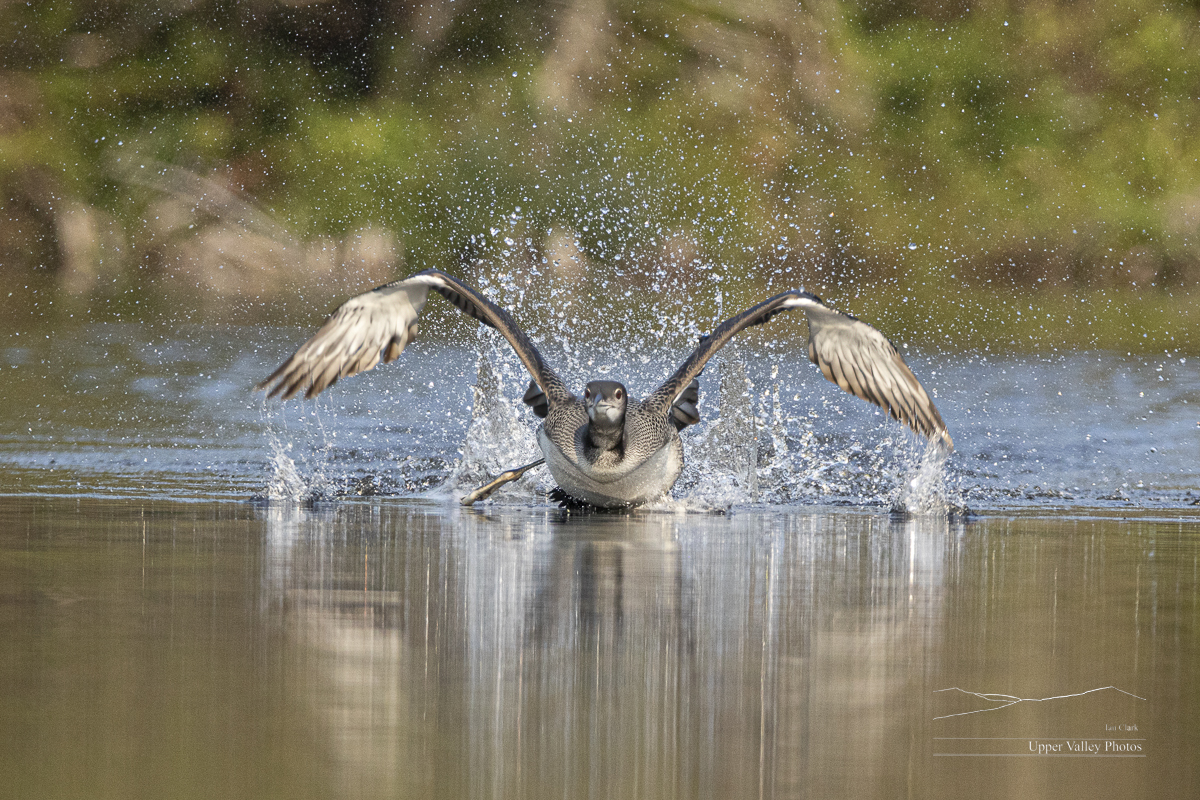
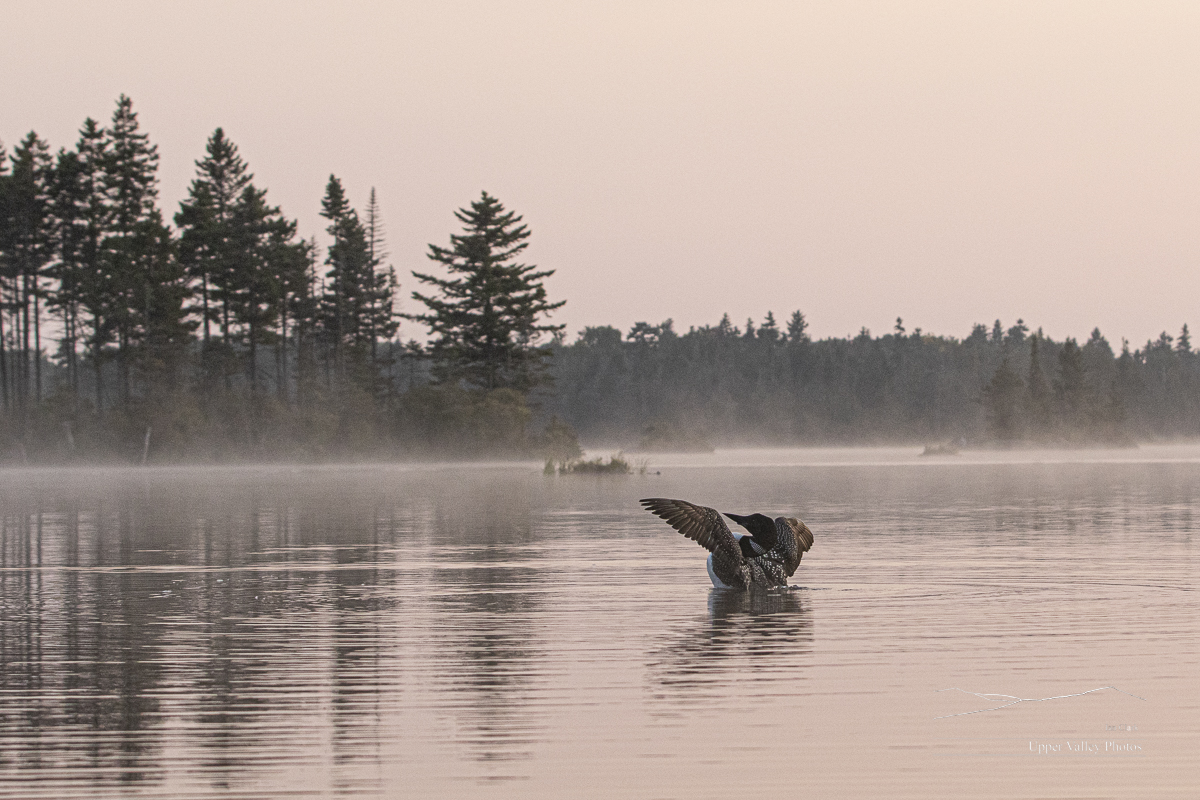
Bluebird Chicks, Day 5, May 11, 2022
The chicks are getting big! They’re beginning to get their first feathers. Soon, they’ll look like grumpy old men 😉
I’ve been out on a local pond watching the loons and other wildlife. There seems to be a pair of loons that have claimed the pond, but every morning two to four other loons come in to challenge them. I’ll be keeping track of them throughout the year and hope to find two families that hatch chicks to follow.
We’re watching eastern bluebird chicks in a nest in a box that has a camera installed to let us watch without disturbing them.
The Usual Suspects, May 6, 2022
Let’s round up the usual suspects. I finally had time to get the kayak in the water and have ventured to a couple of the local waterholes. Let’s see who I’ve found.
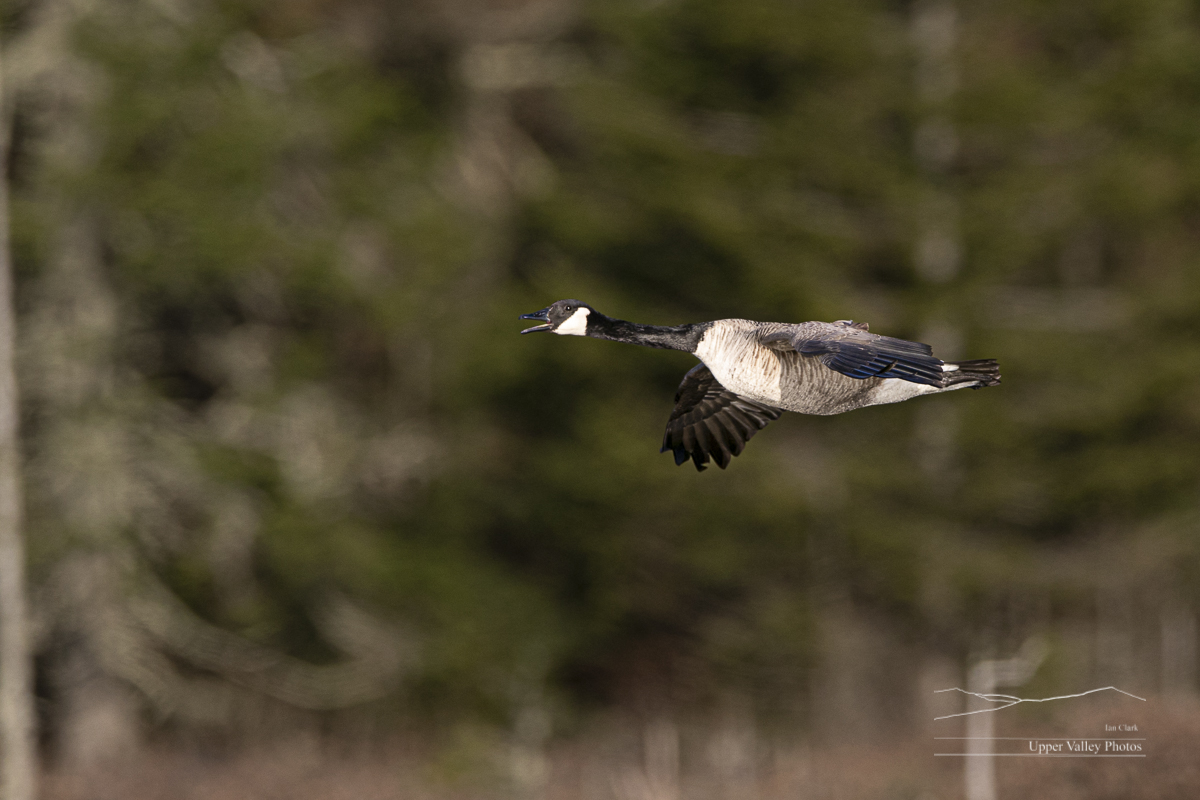
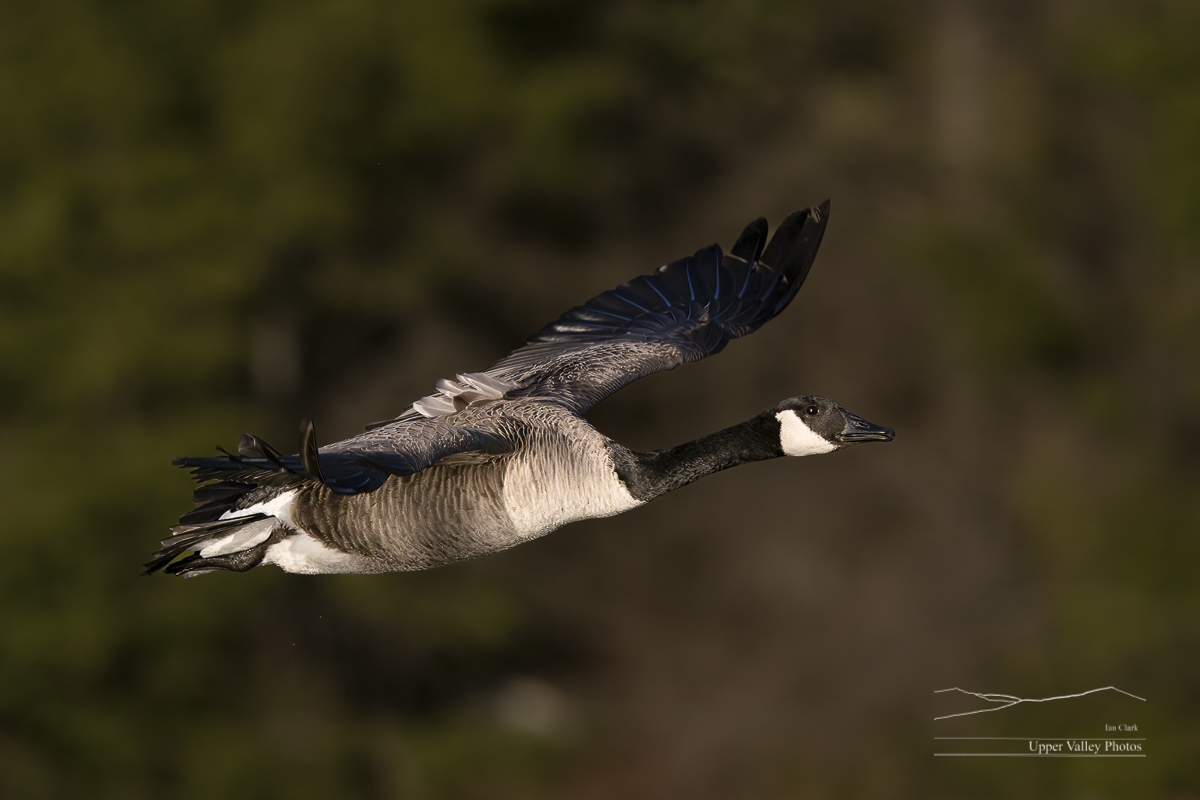
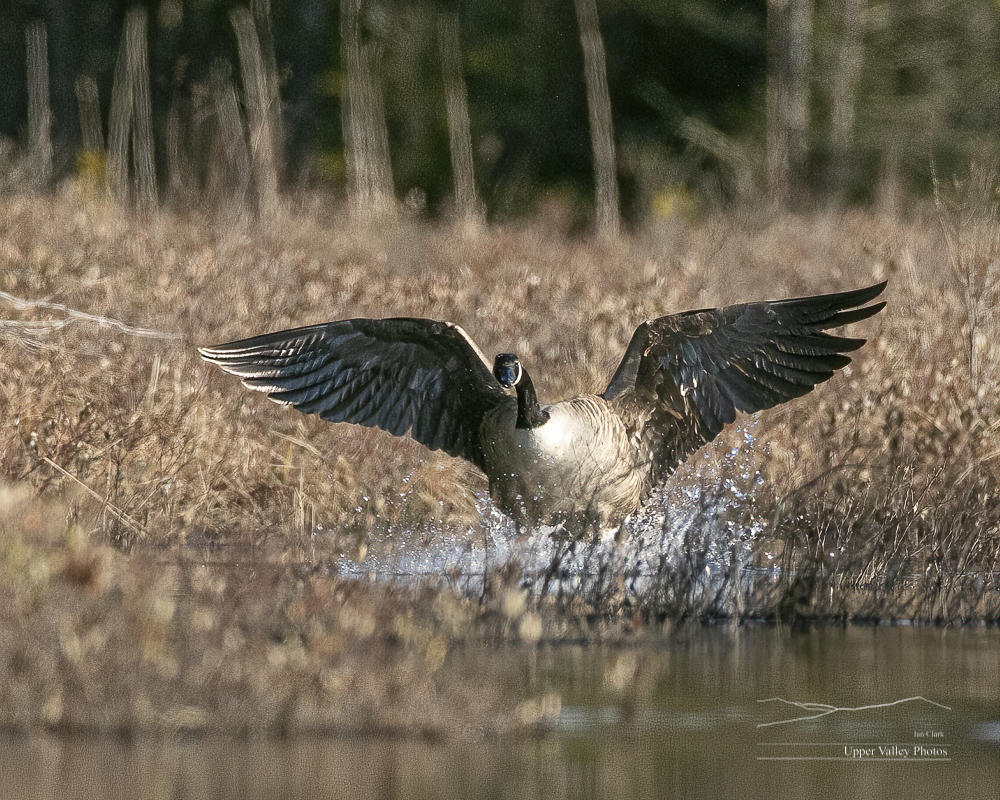
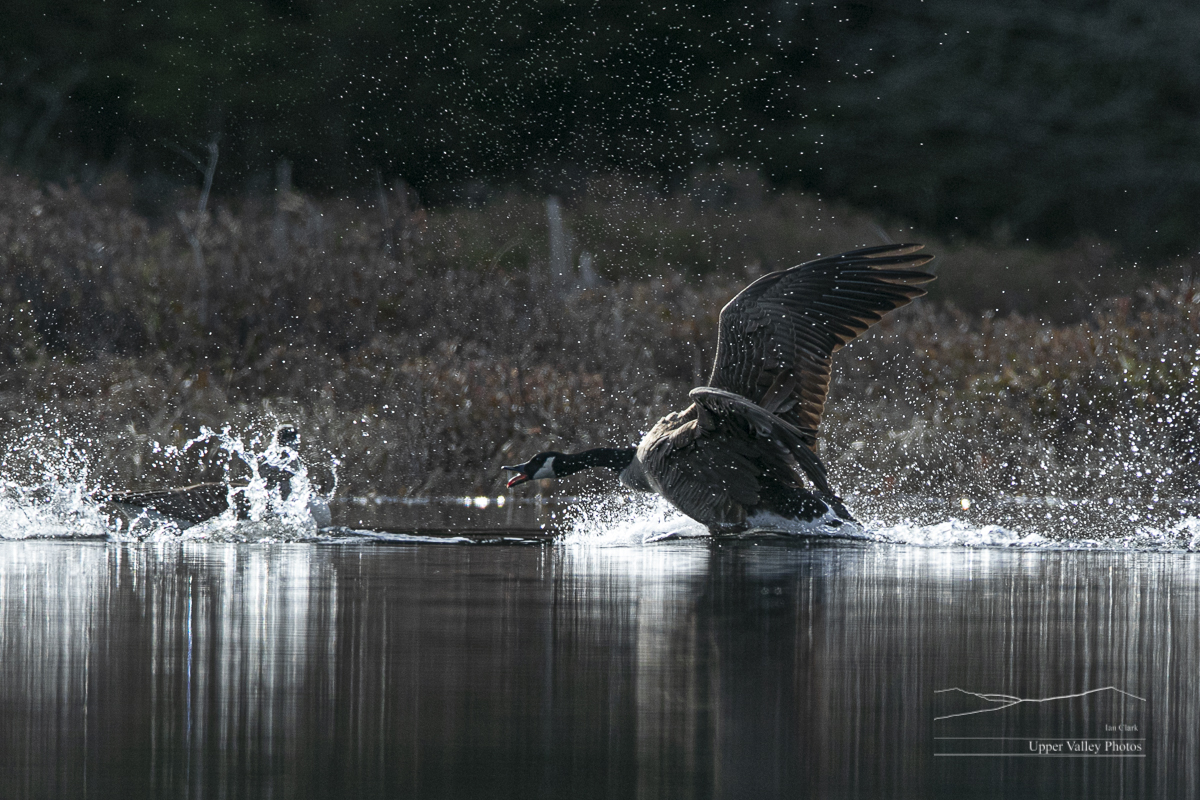
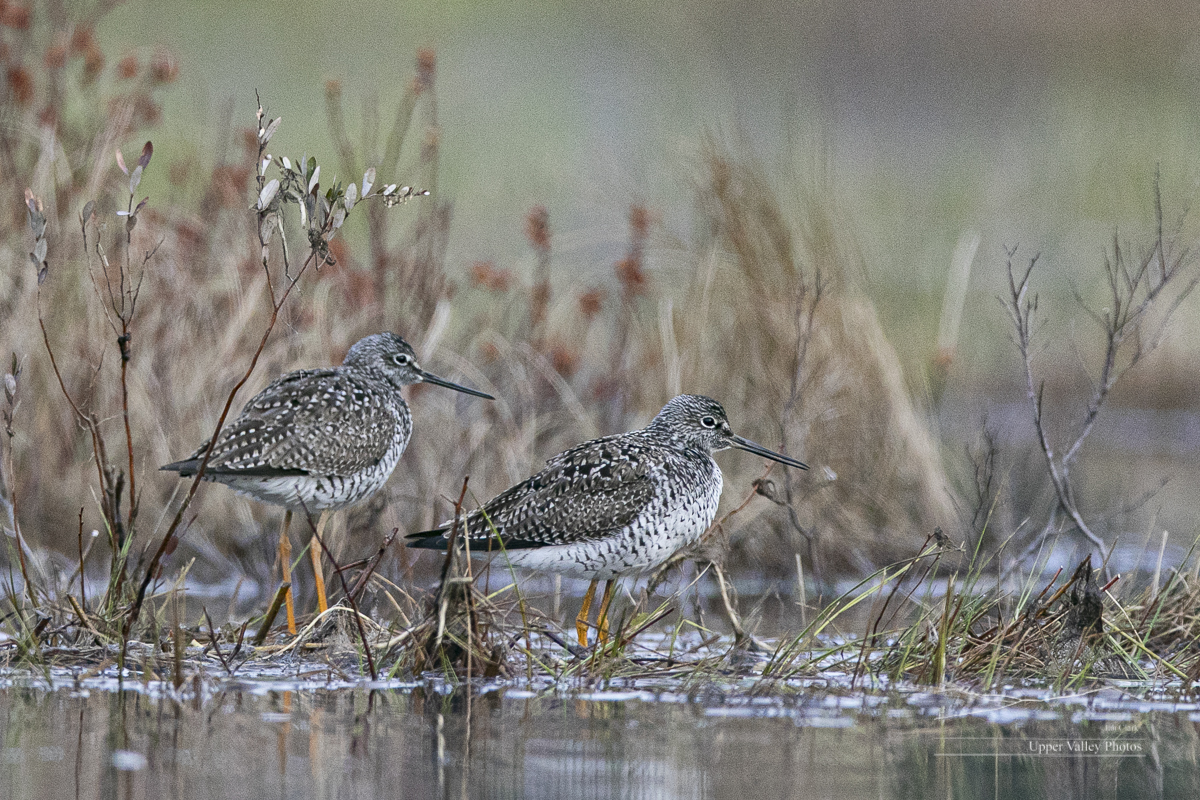
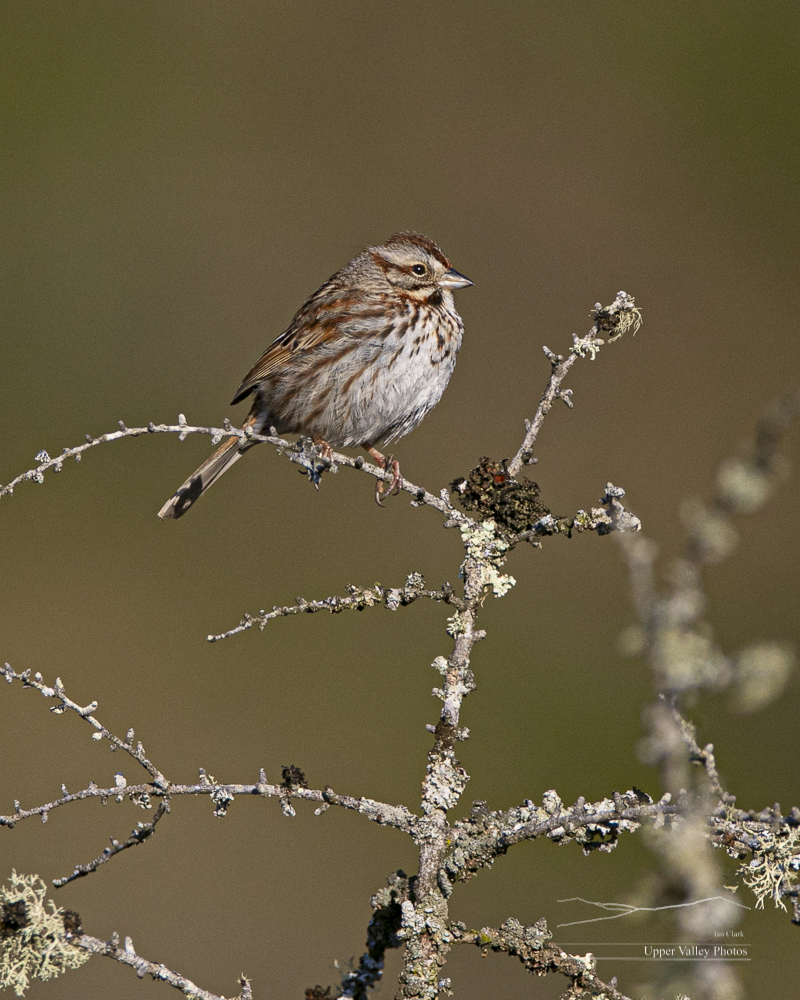
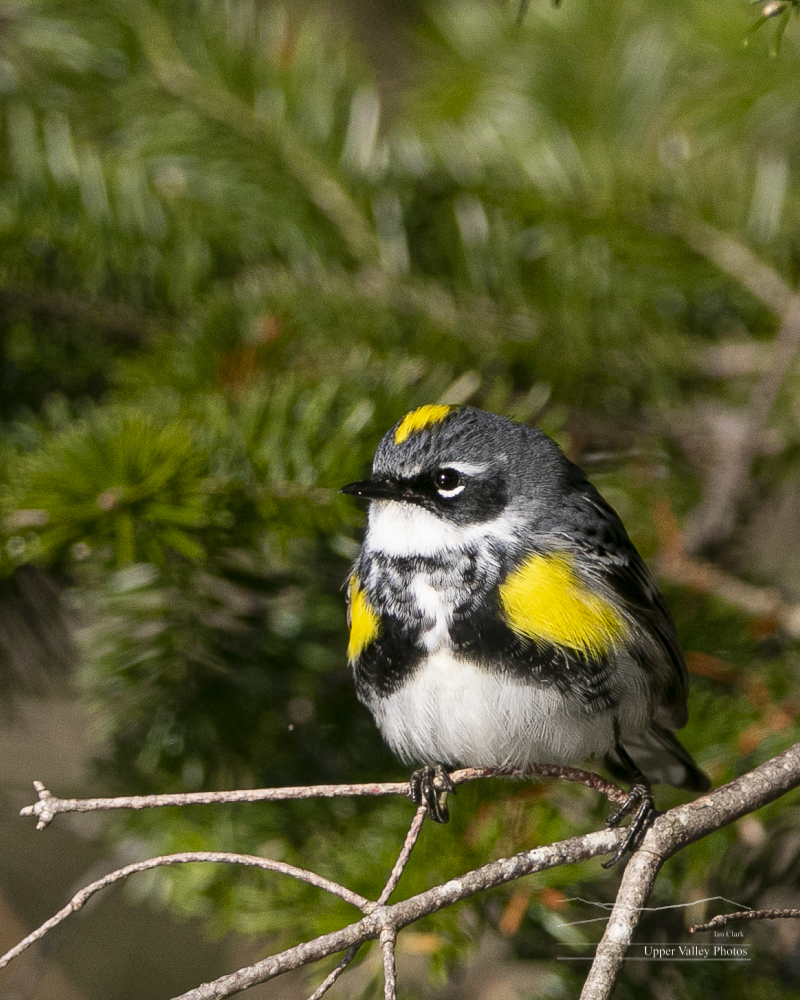
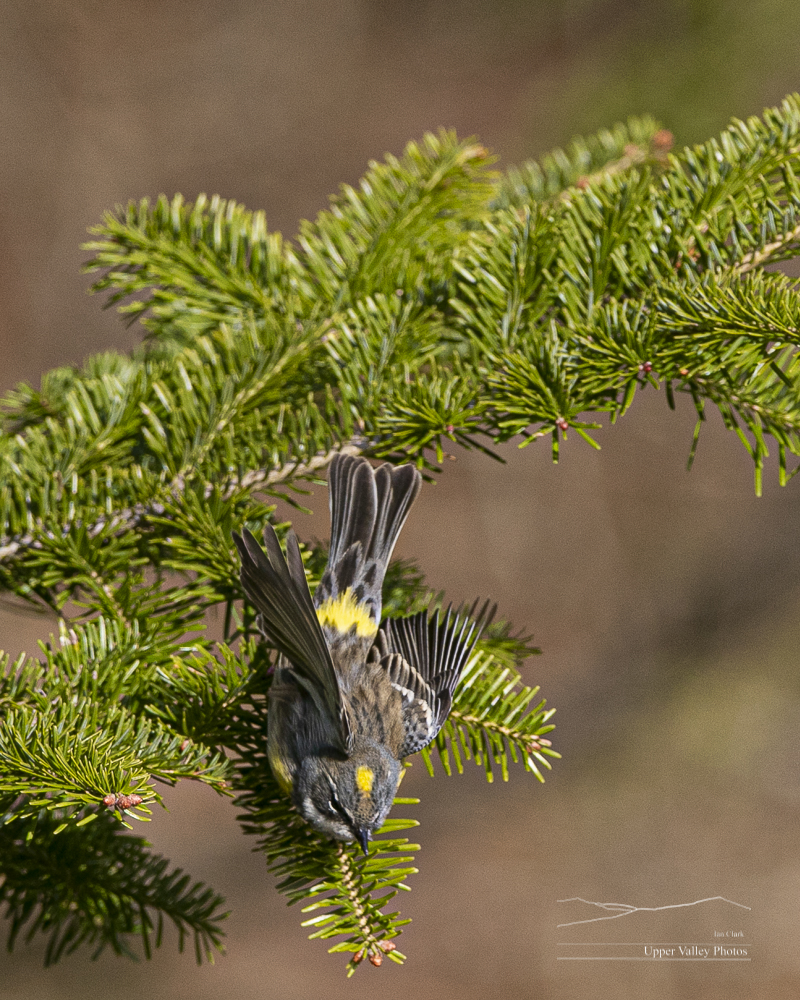
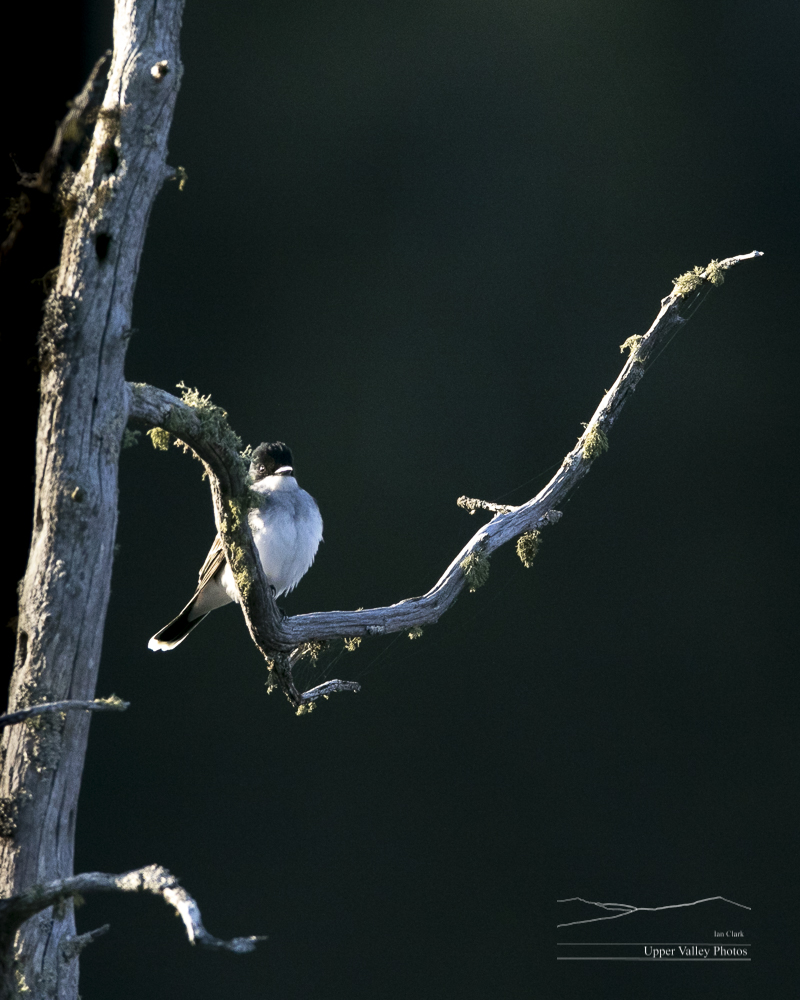
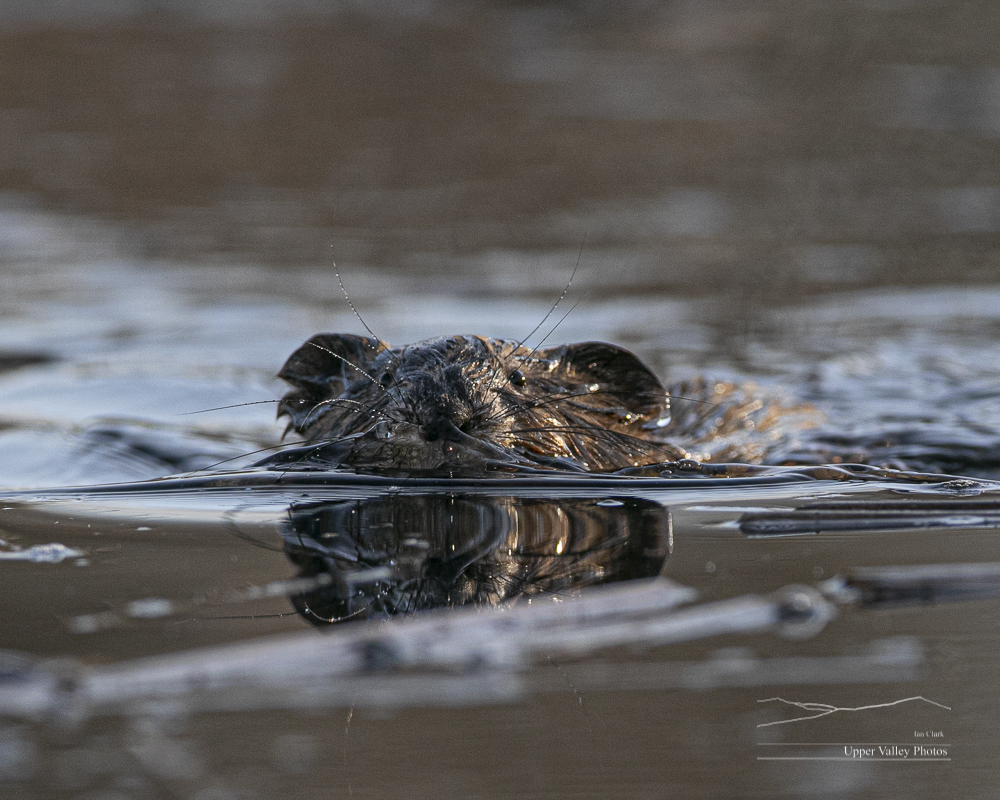
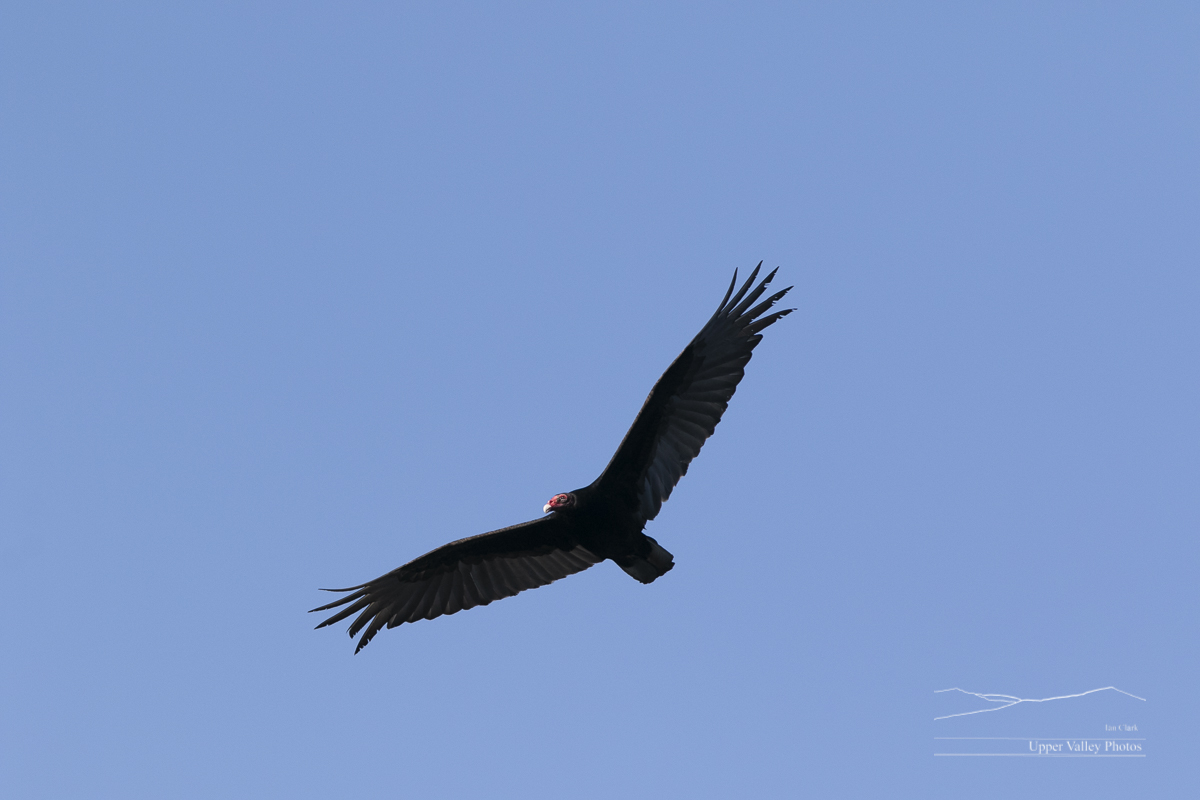
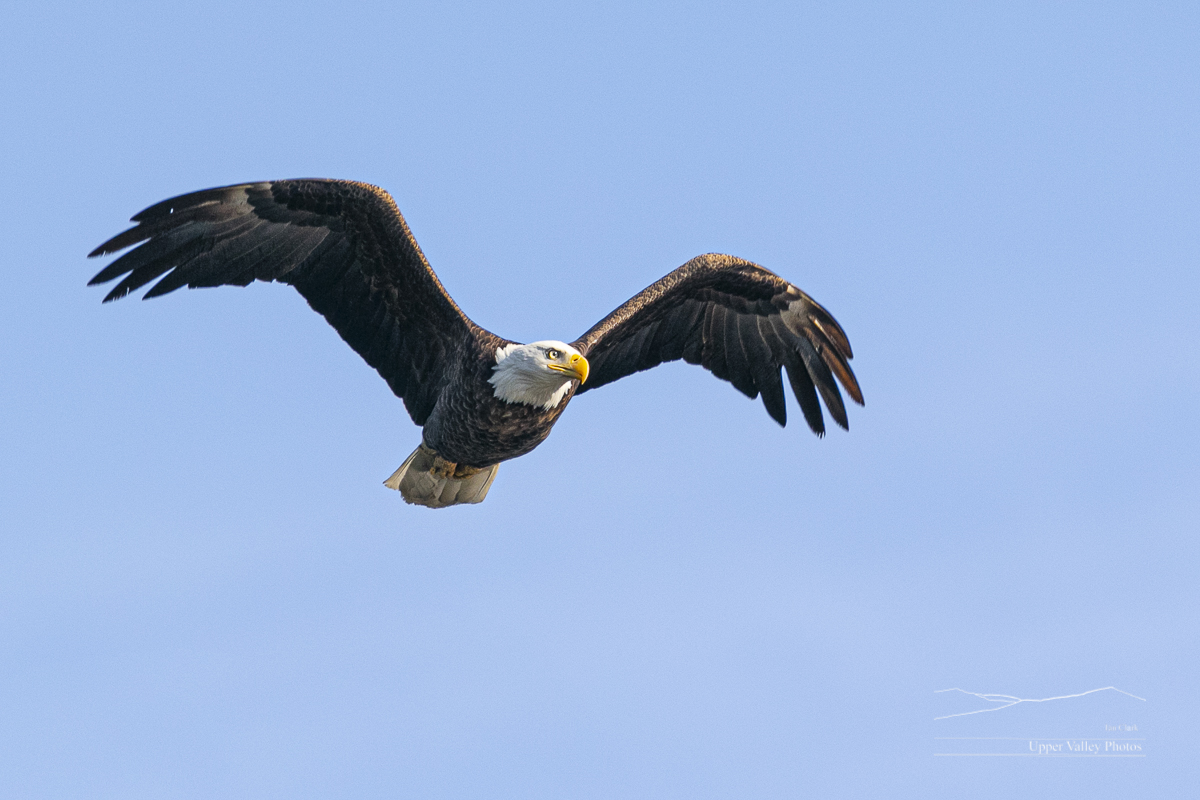
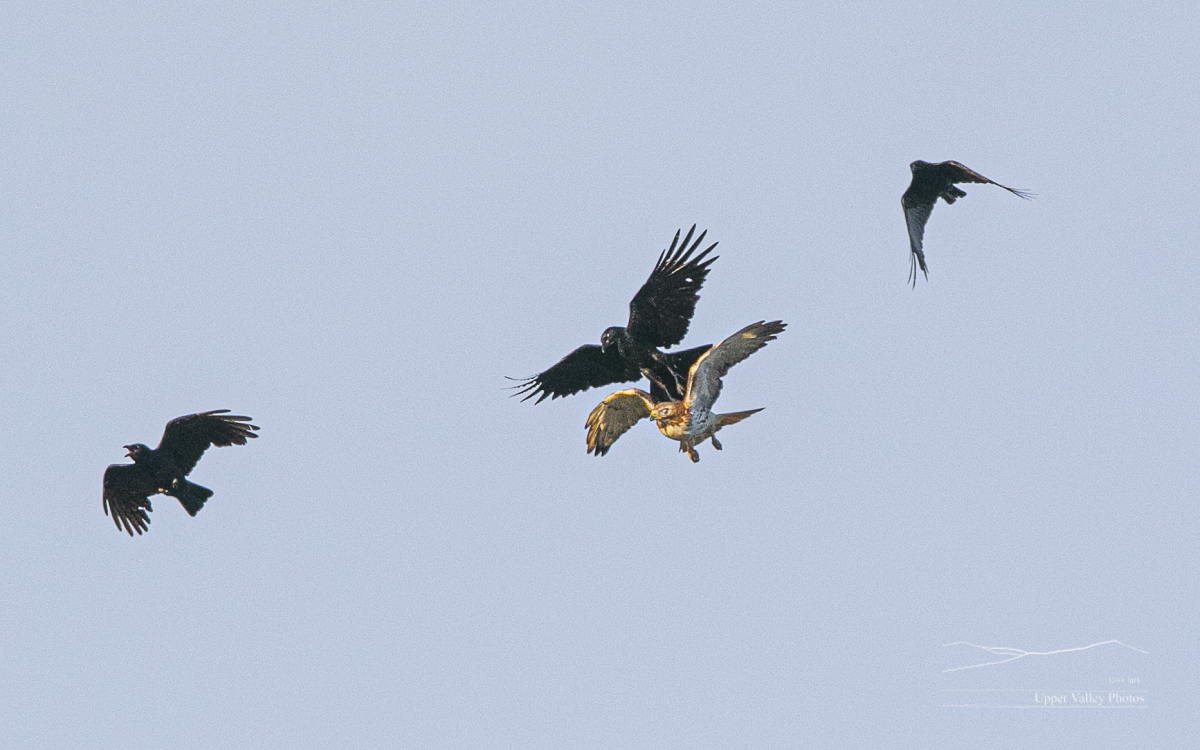
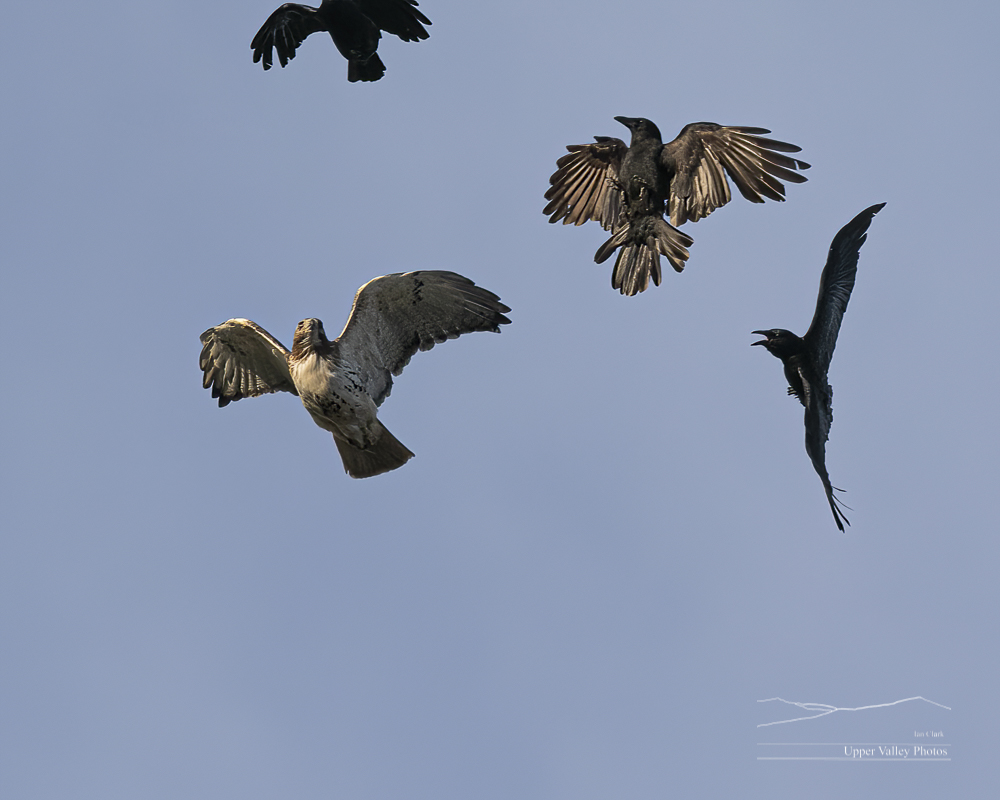
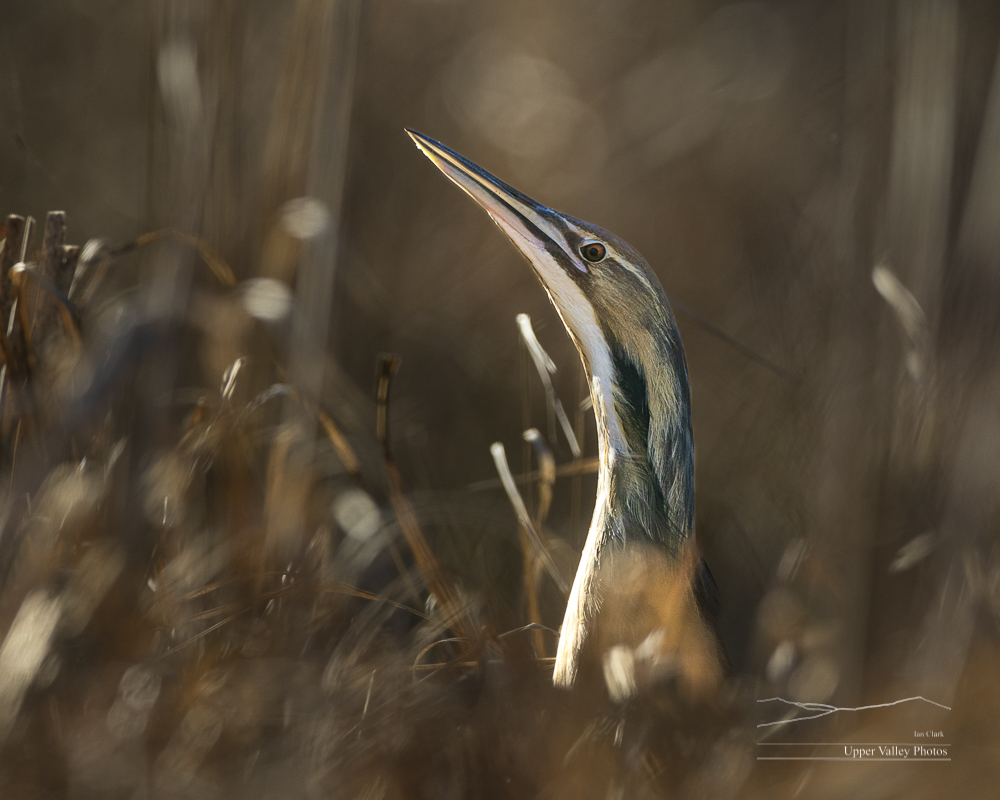
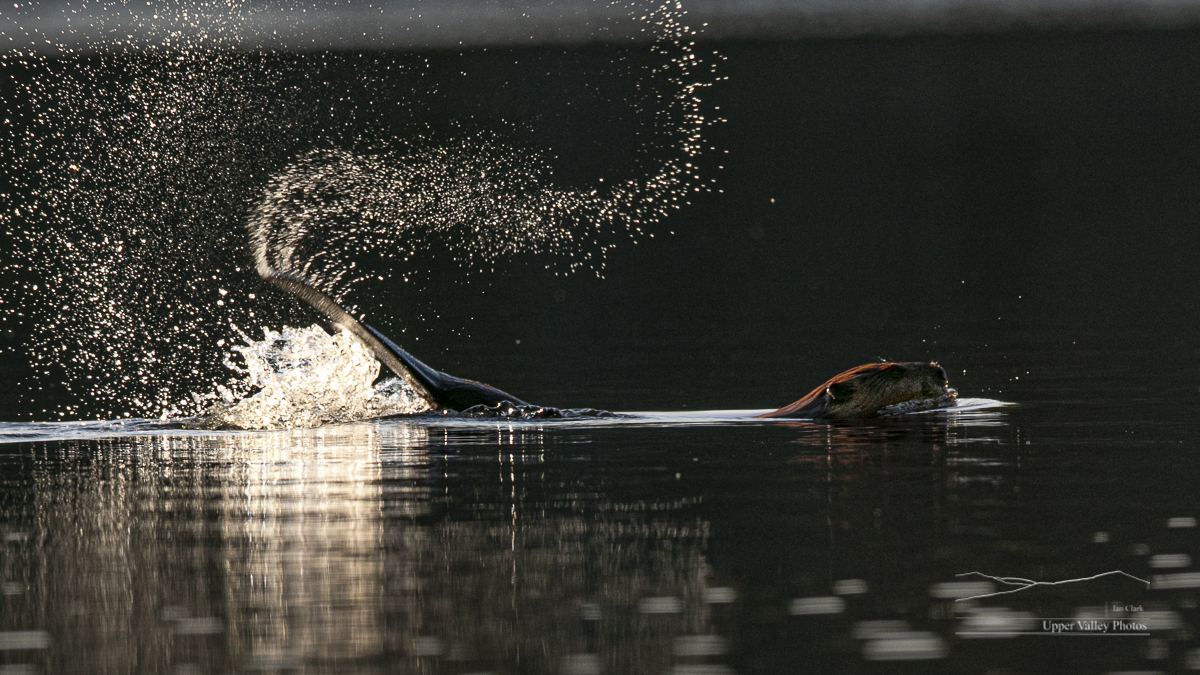
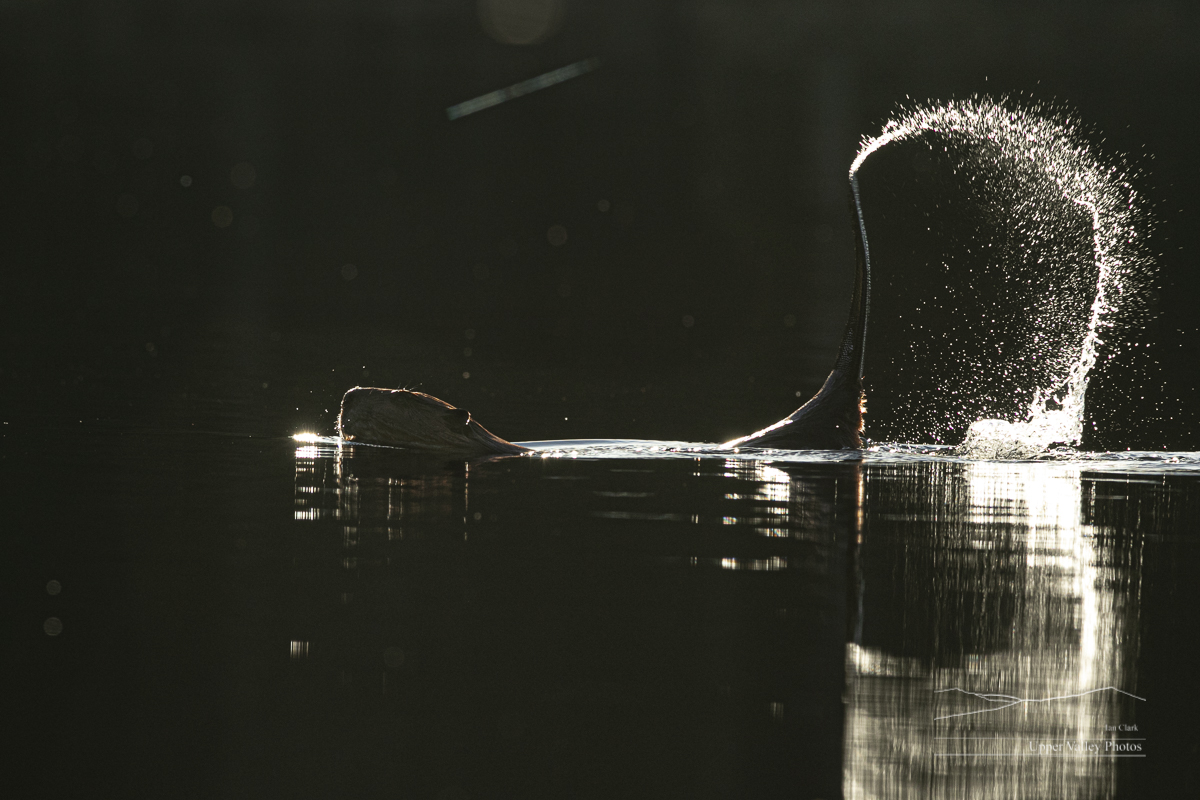
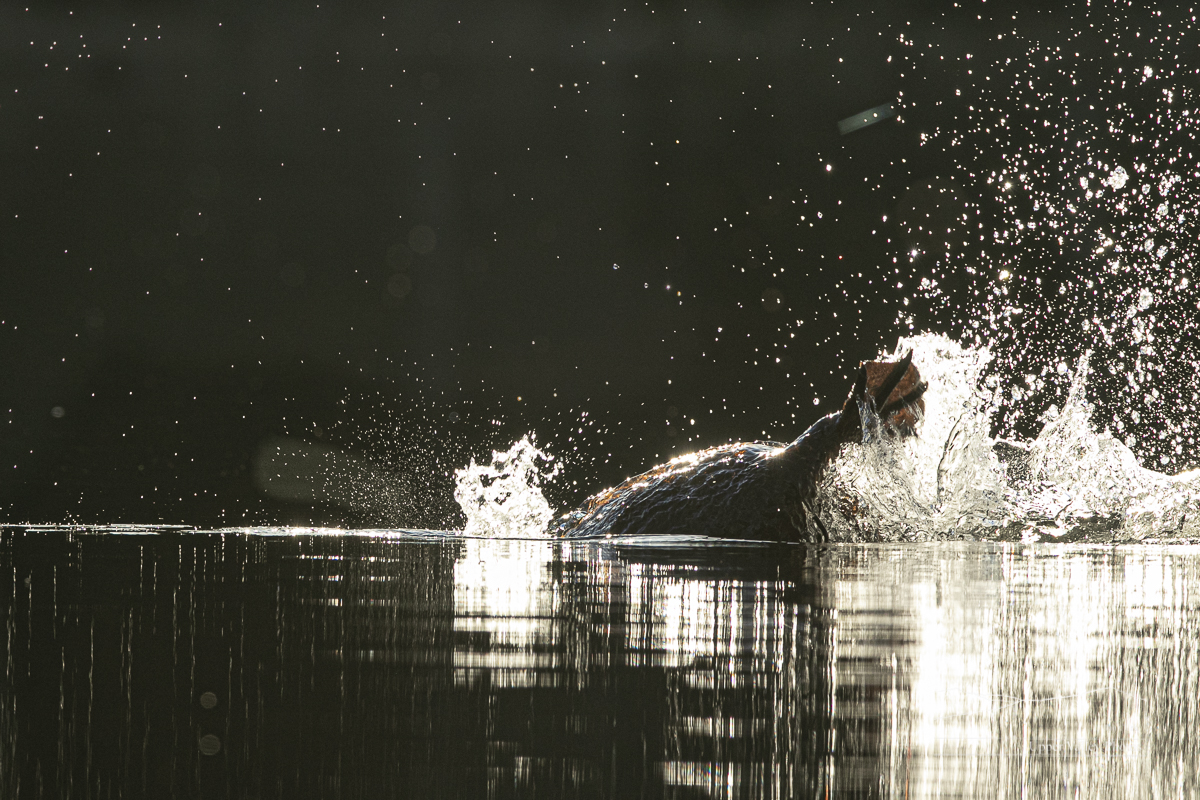
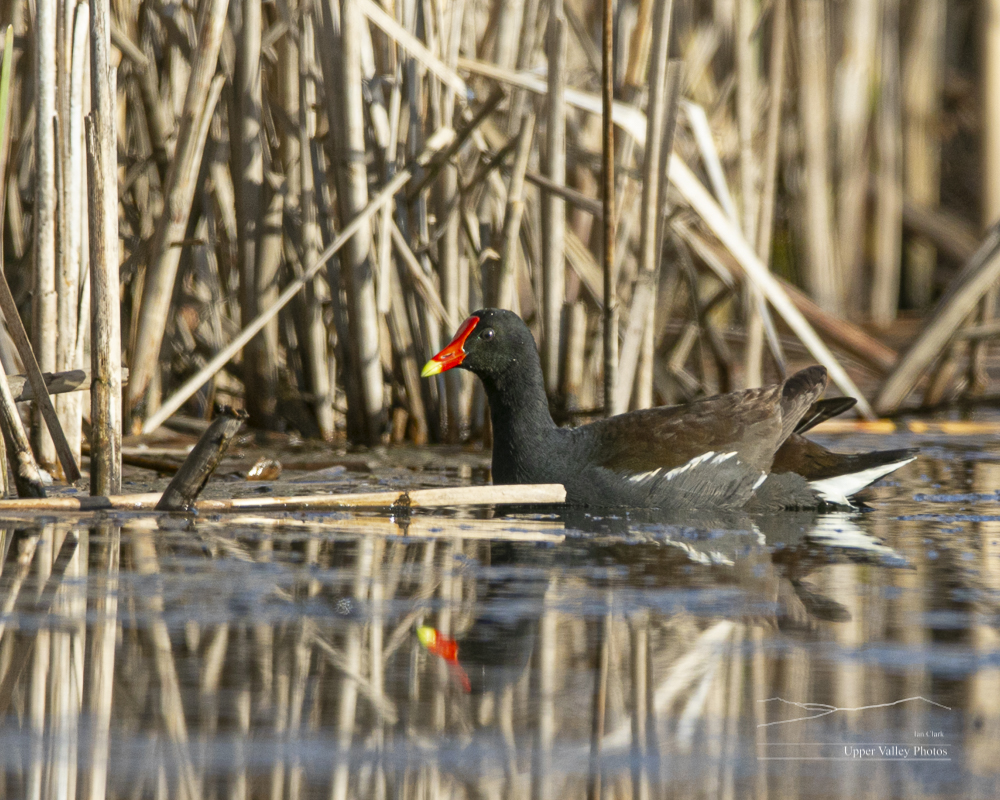
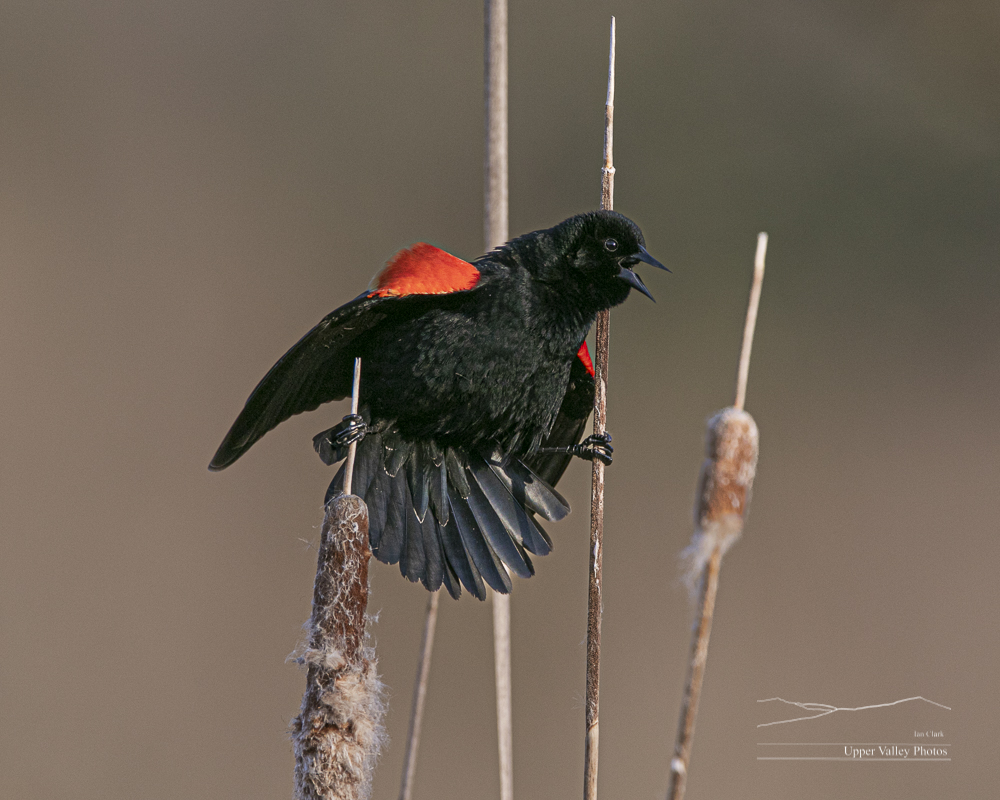
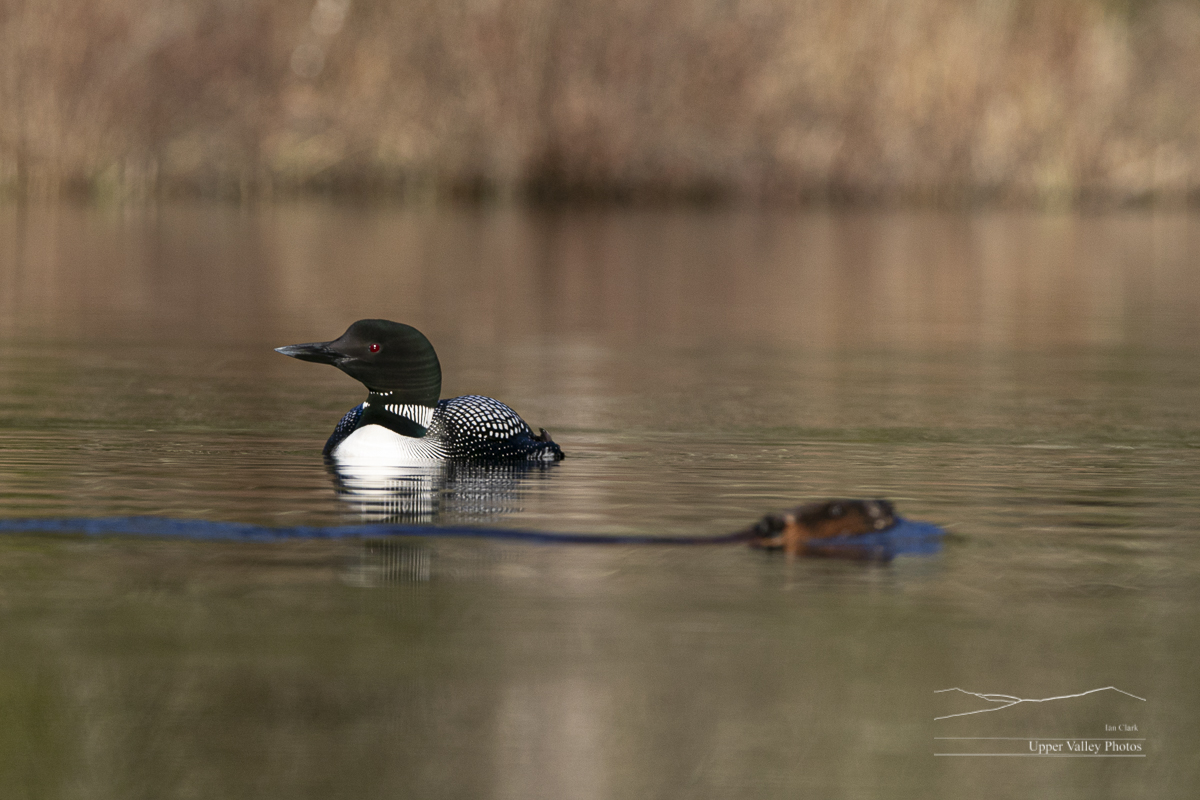
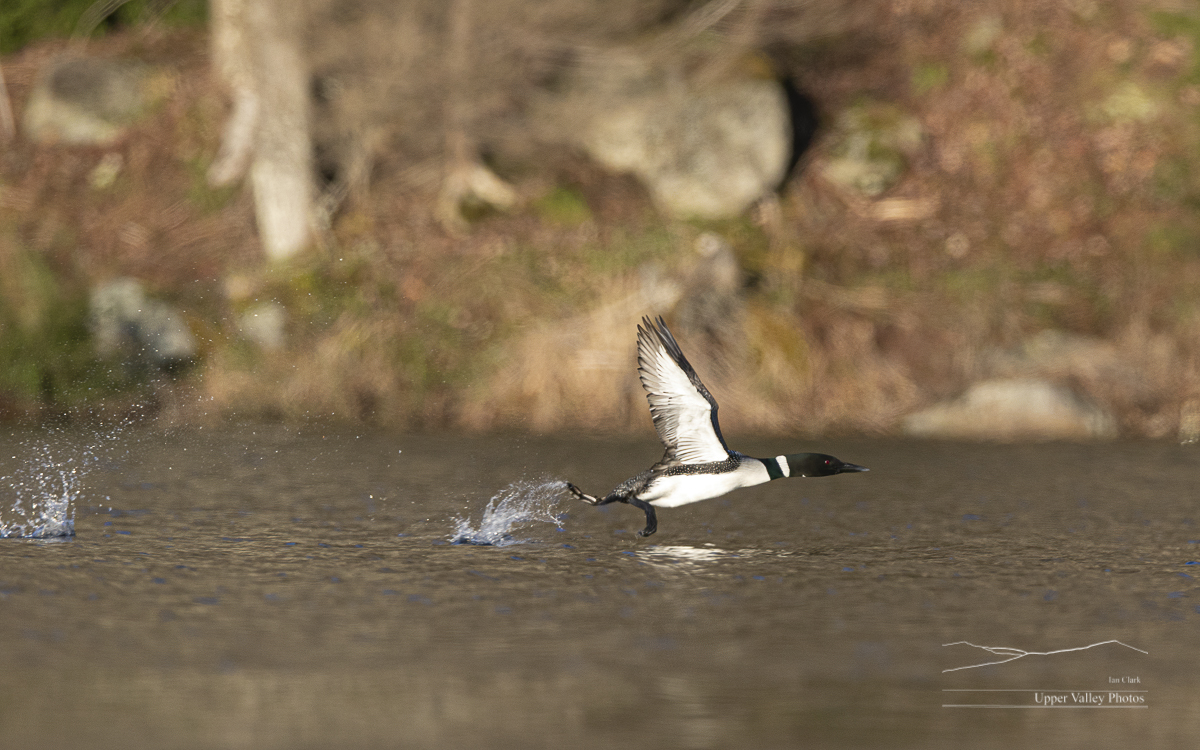
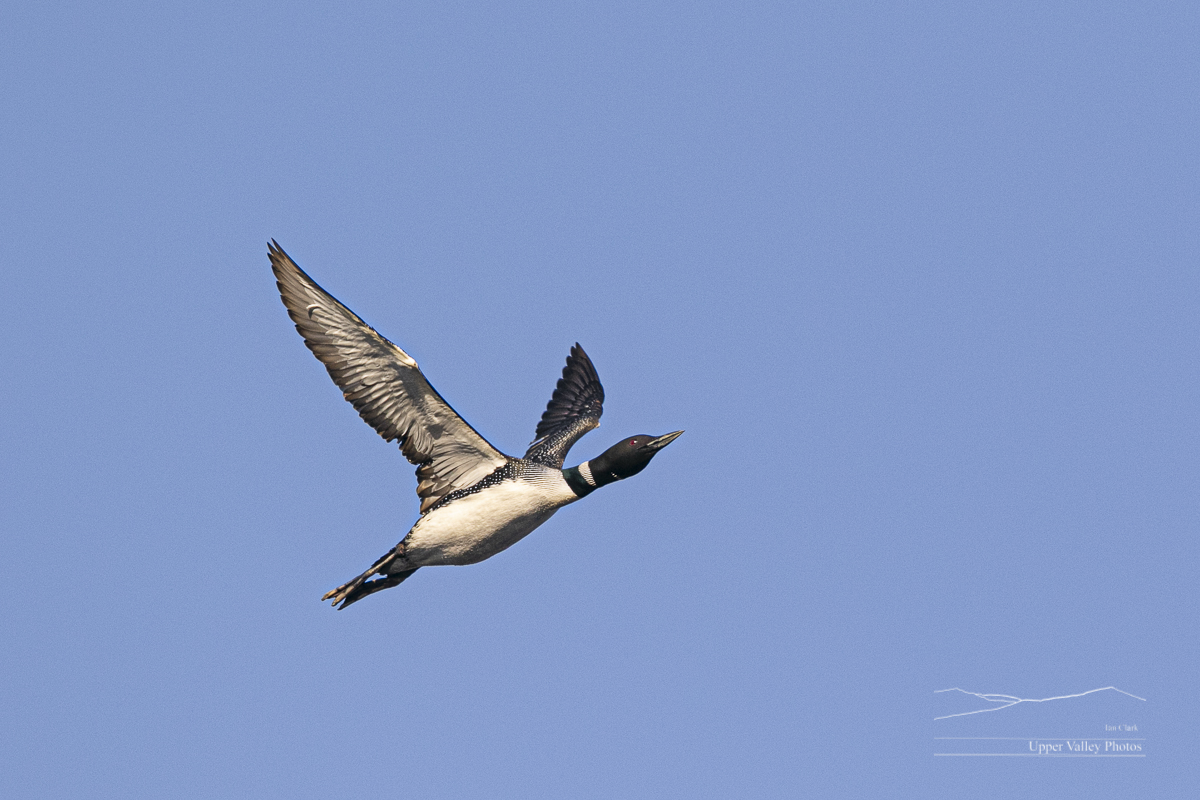
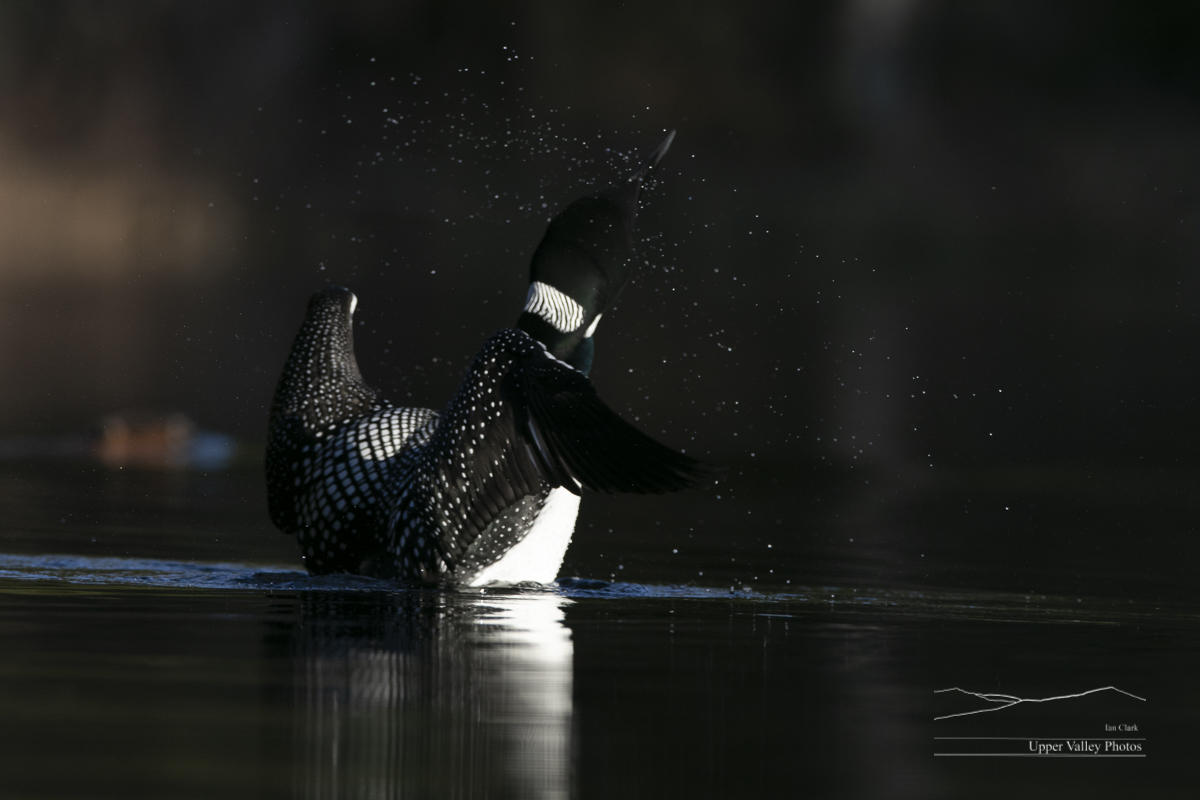
I’ll be following a couple loon families throughout the summer, along with other critters. Sign up for notifications to follow along.
More Work on the Bluebird Nest
Another busy morning for our bluebirds. Mrs. has been hauling in building material and is starting to form the ‘cup’ in the nest for the eggs. She’s pressing her underside down into the grass and fluttering her wings to get the right shape for the cup. Mr. Bluebird peeks his head in from time to time to make sure everything is going well.
I’ve installed cameras in several bird nesting boxes in the yard to allow us to watch the birds without disturbing them.
Mrs. Bluebird Works On Her Nest
Today is the third day that Mrs. Bluebird has been working on her nest in our camera equipped nesting box. She made several trips in with material this morning before taking a midmorning break.
I installed a camera inside the box to let us watch their progress without disturbing them. Today’s video is in black and white because the camera has a automatic exposure sensor that switches to B&W in low light. We’re having a gloomy morning here in Vermont and there isn’t much daylight.
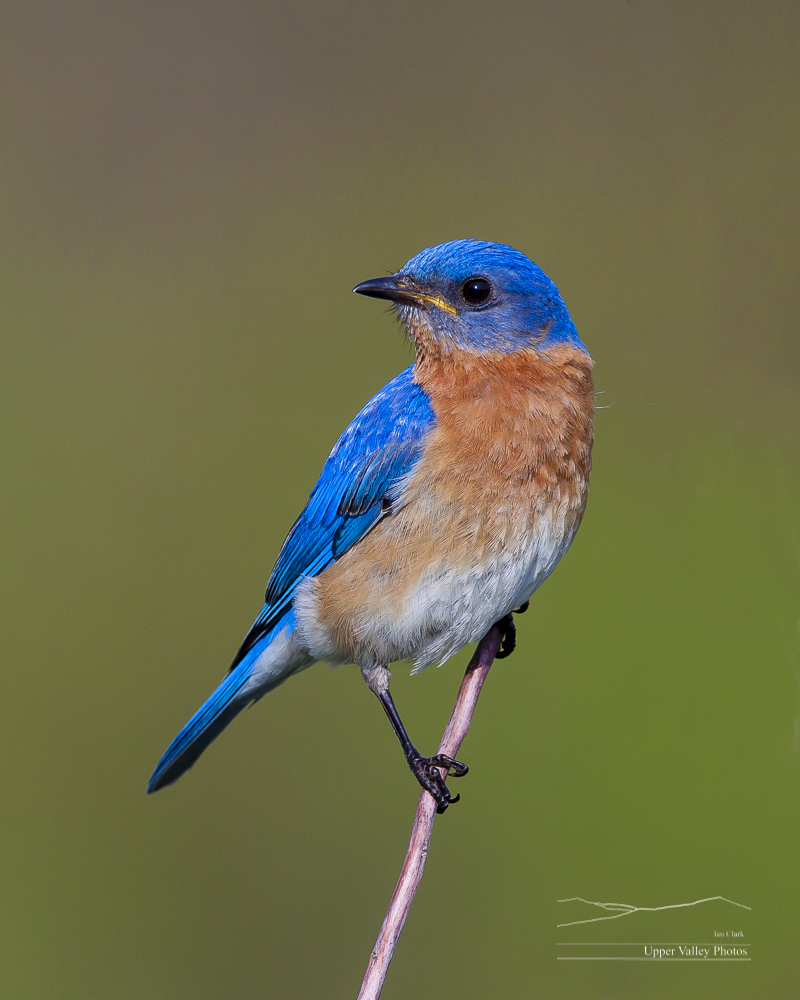
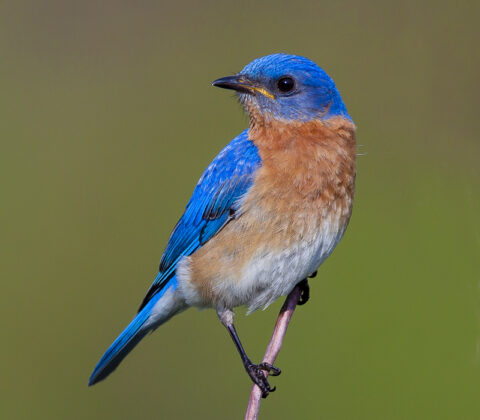
Our Bluebirds Have Returned!
Our bluebirds are back and they’ve selected a bird box for their nest. They’ve started building this week. Check back regularly for updates as we follow their progress.
I put a small video camera in the box to let us watch without disturbing the bluebirds. I’ll post updates regularly while their building the nest and raising their family.
Know someone who might like this? Please share it with them or to your social media.
